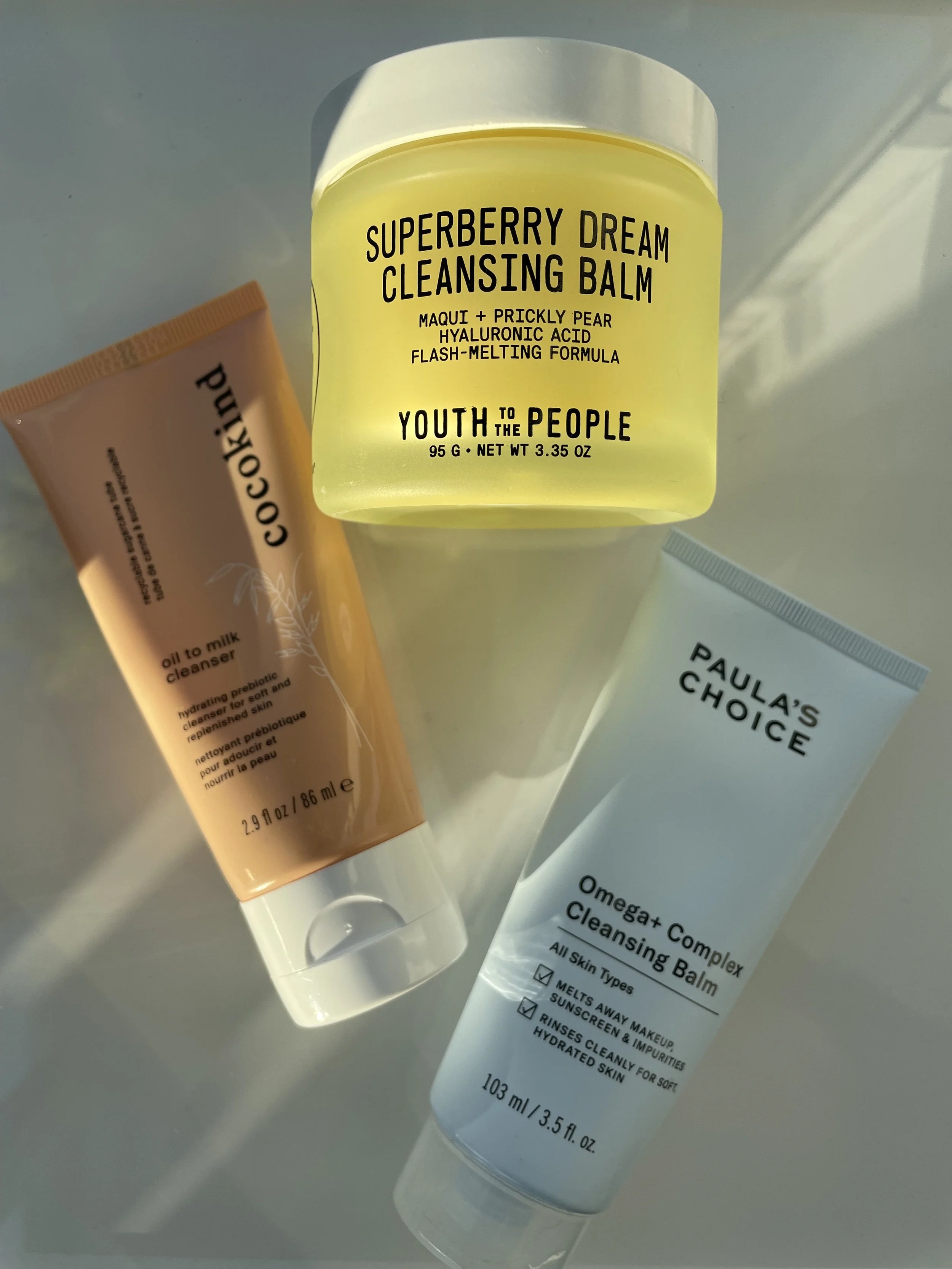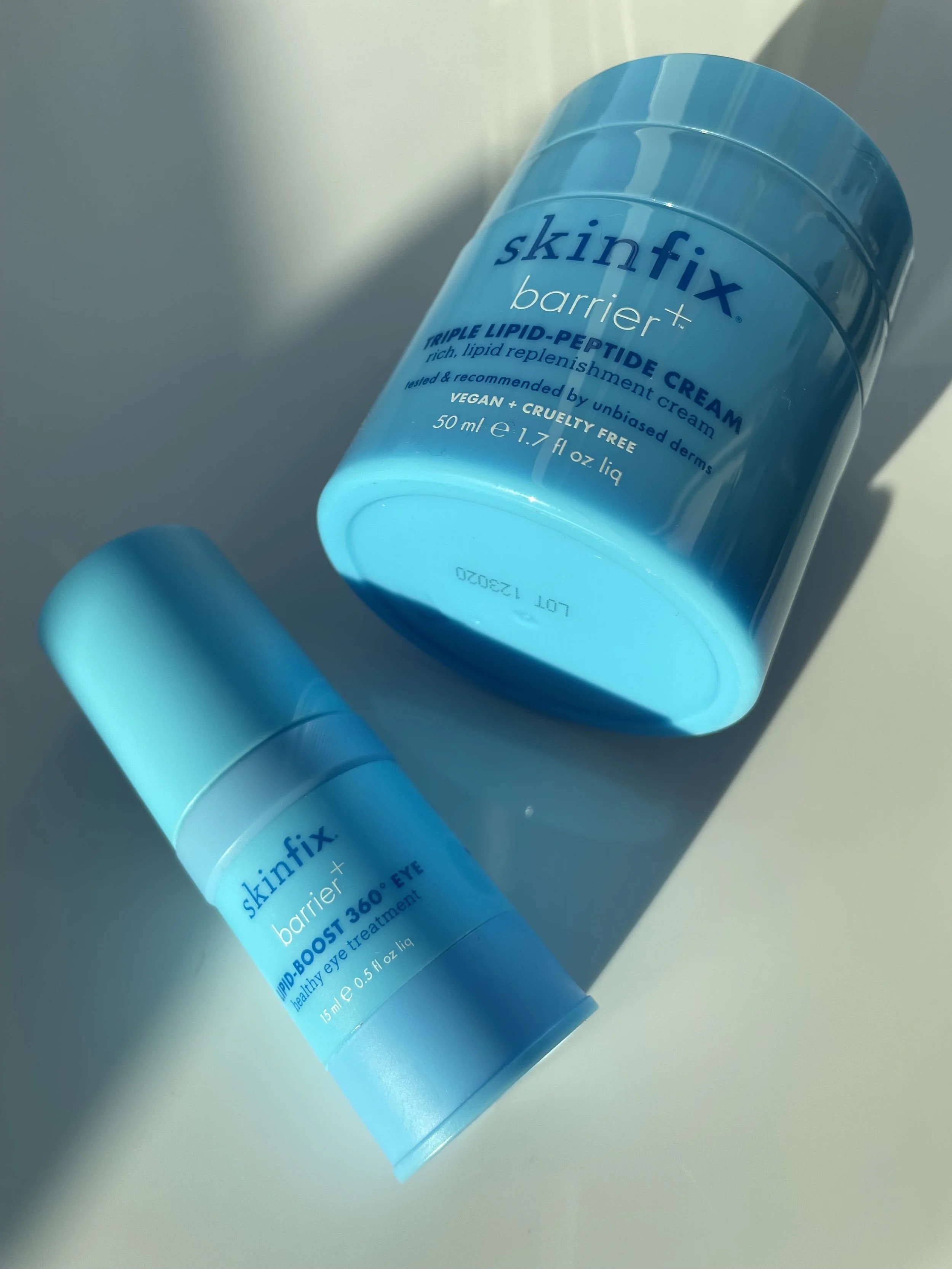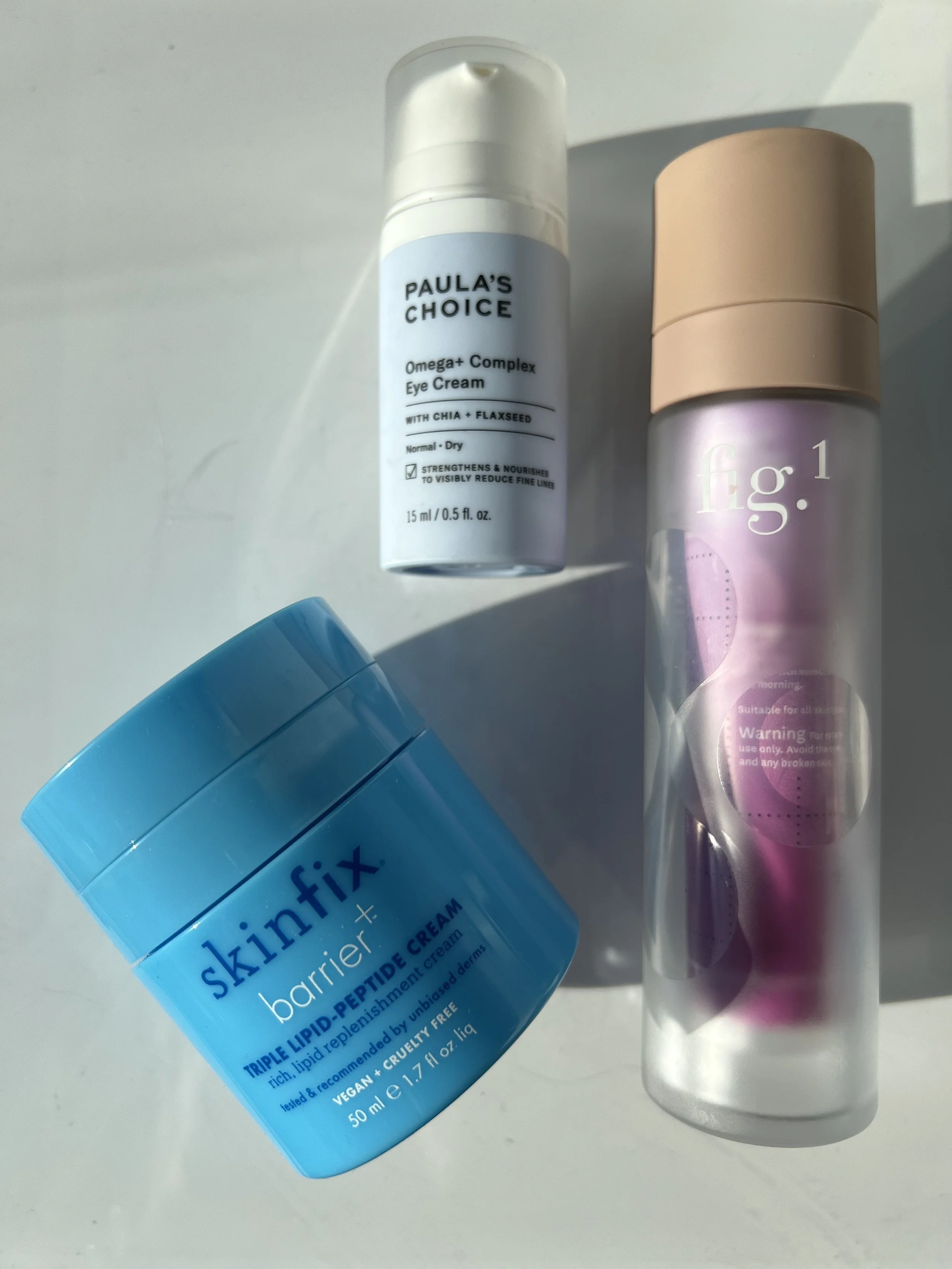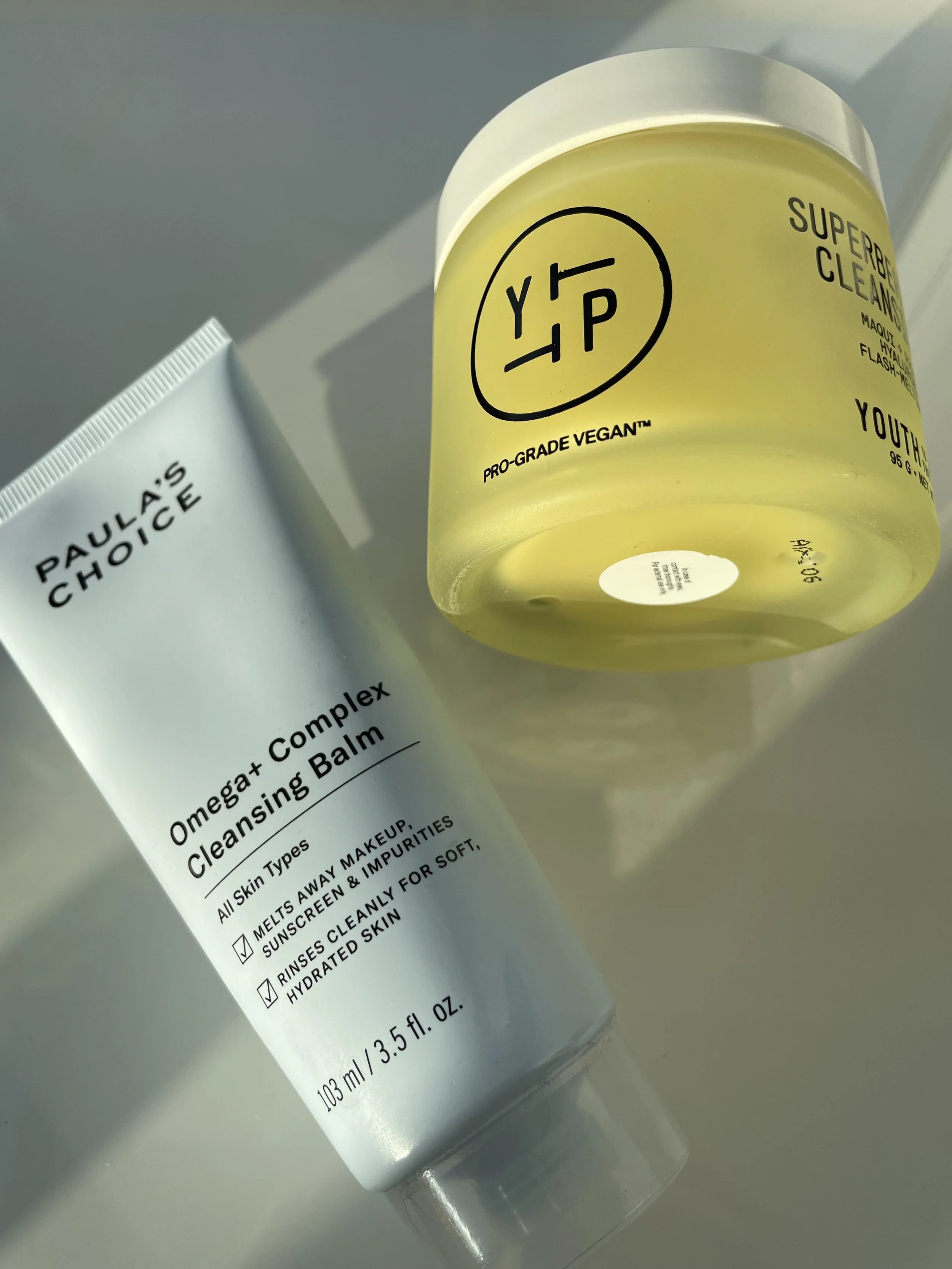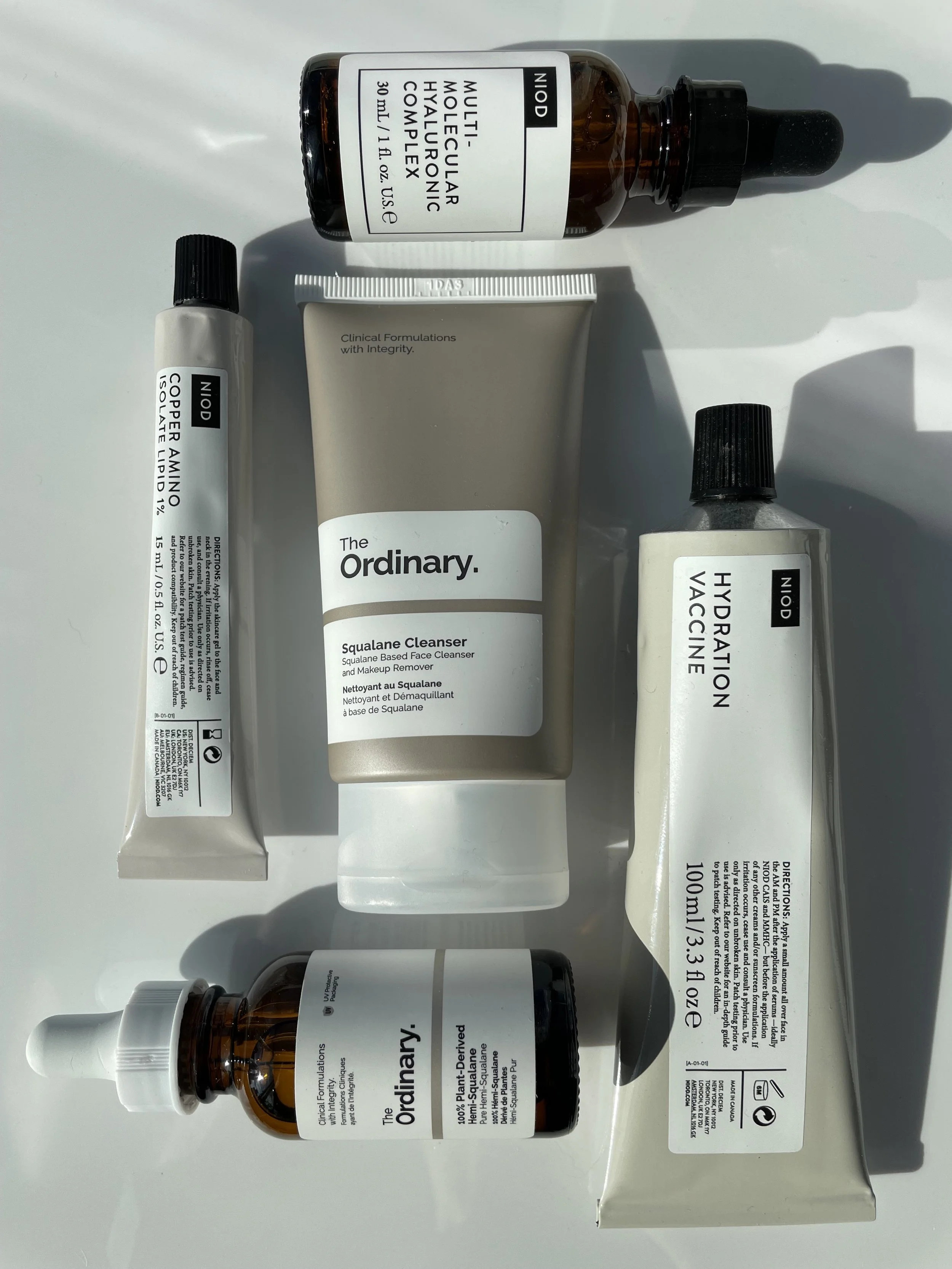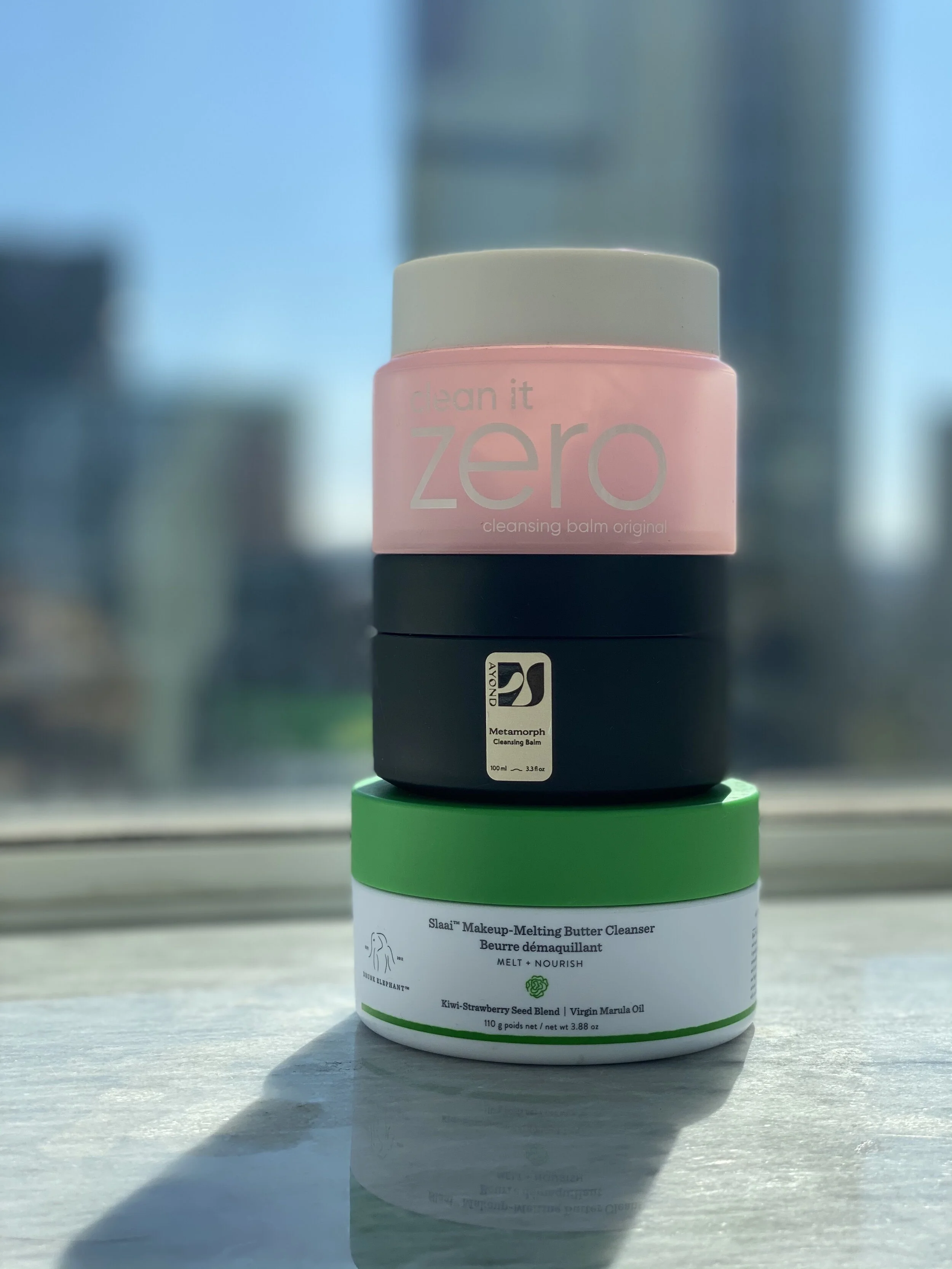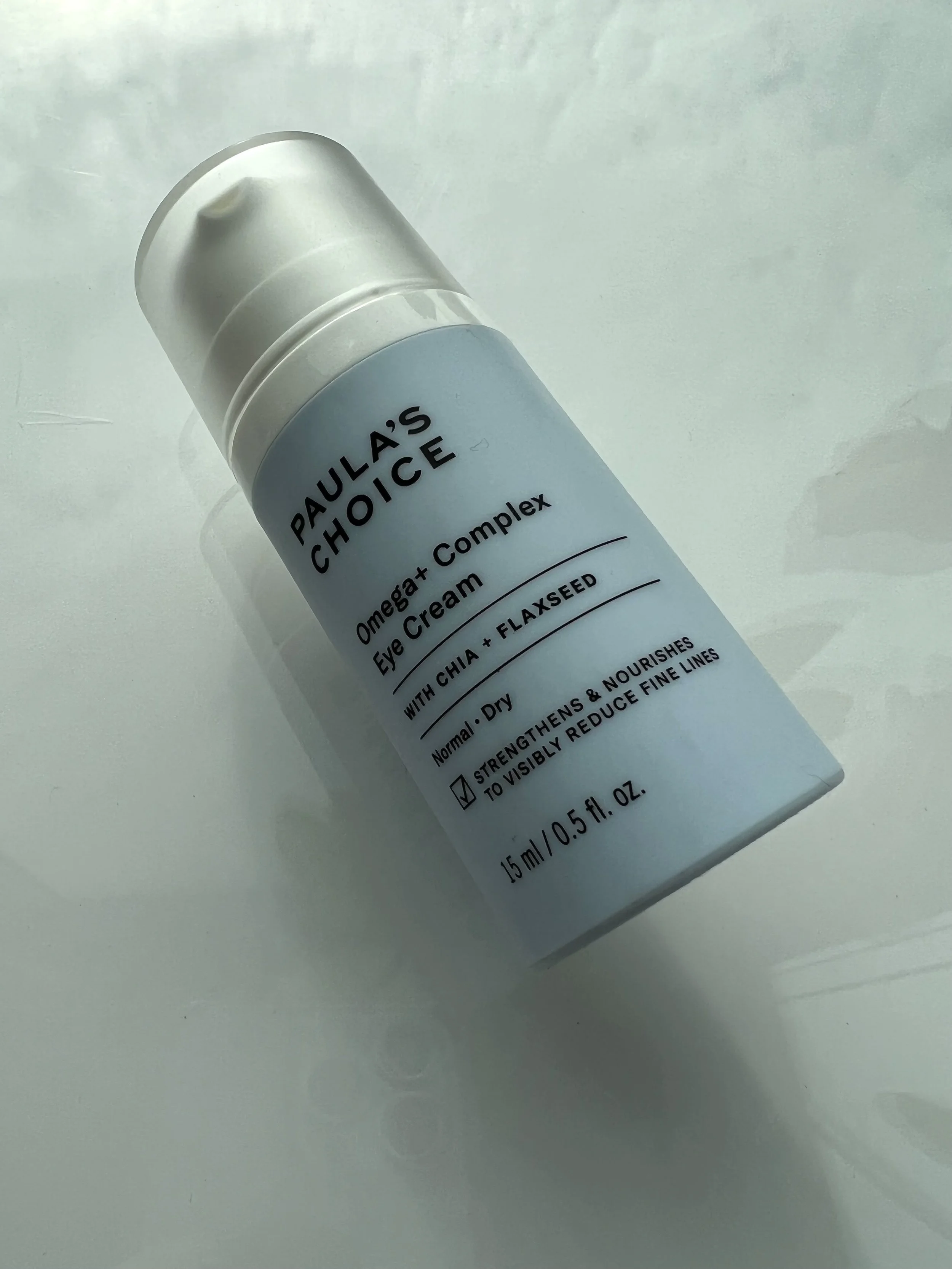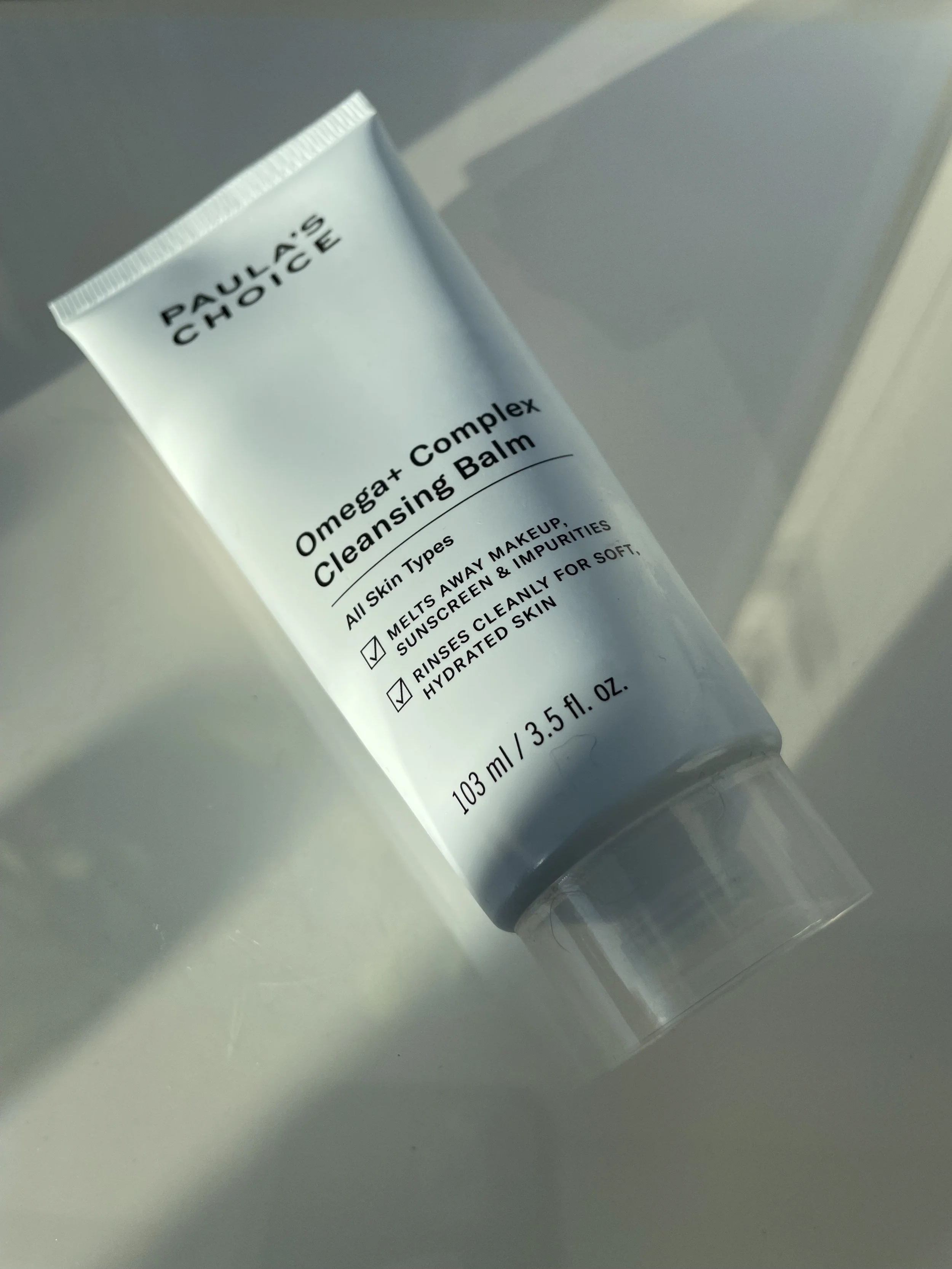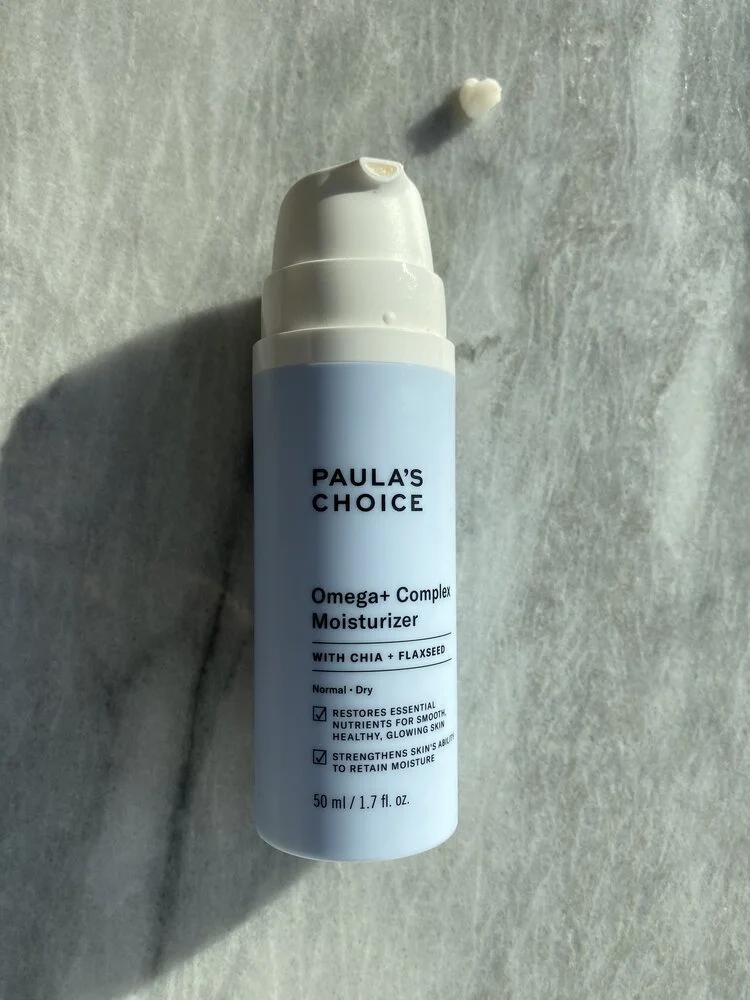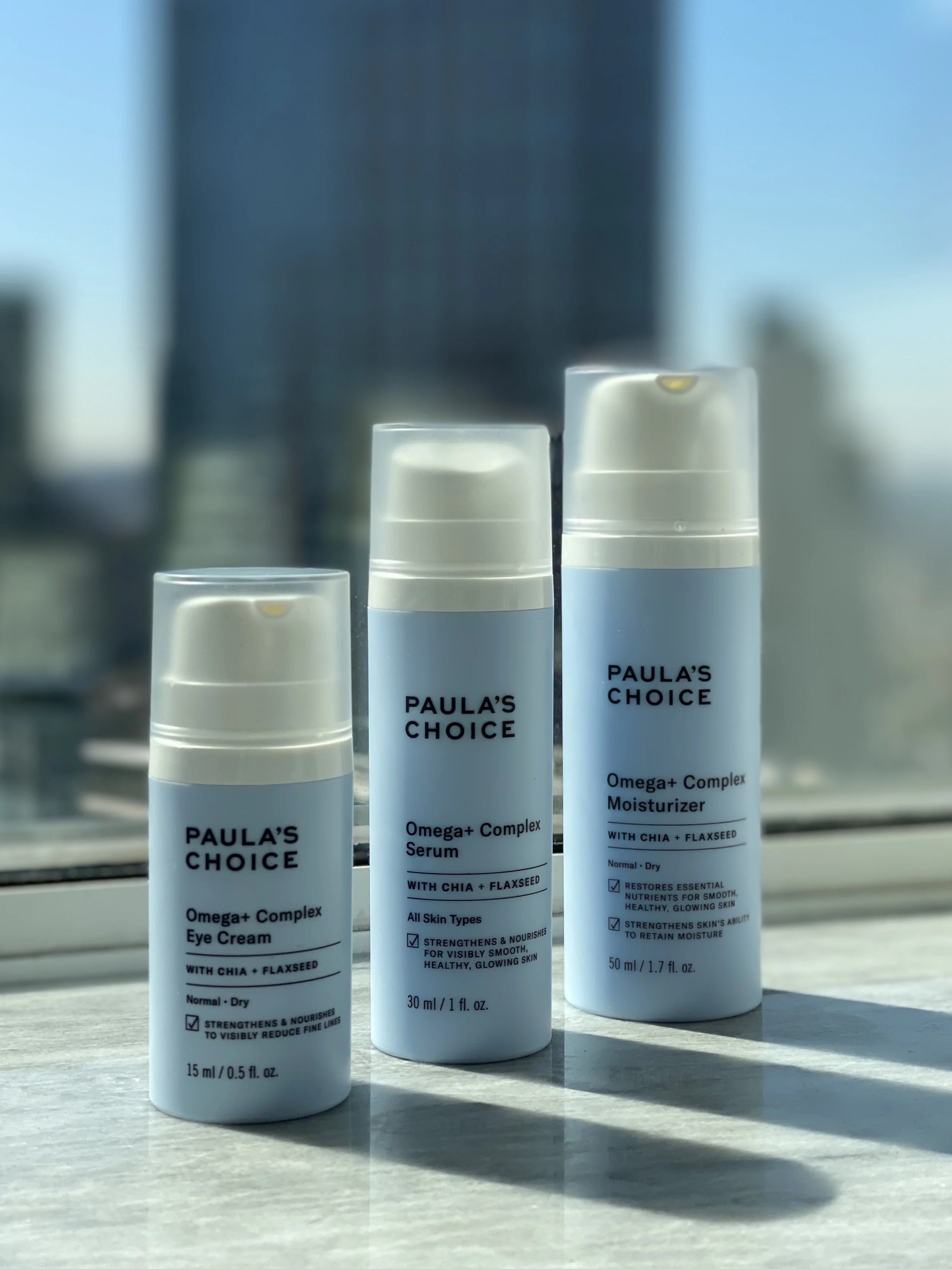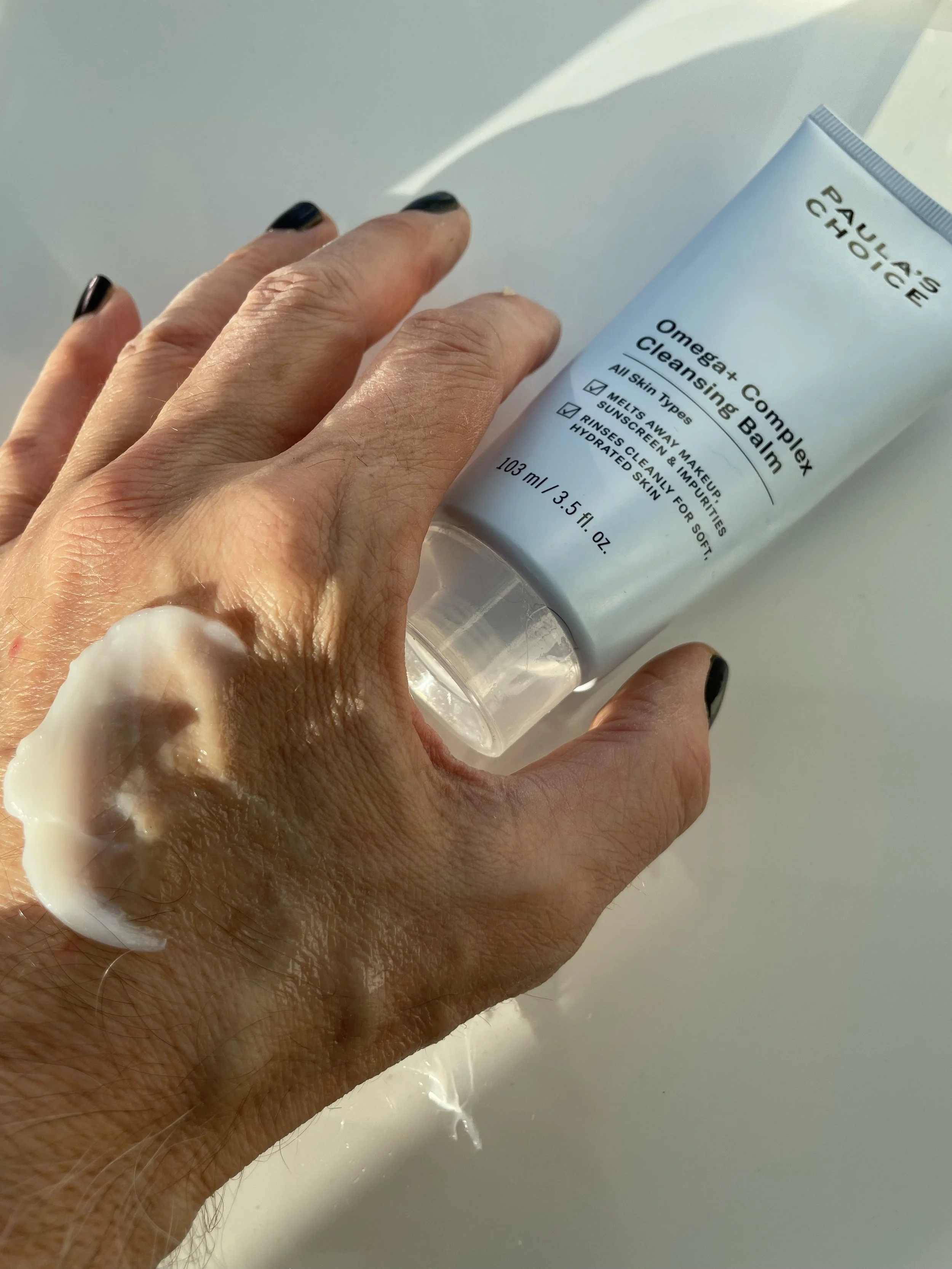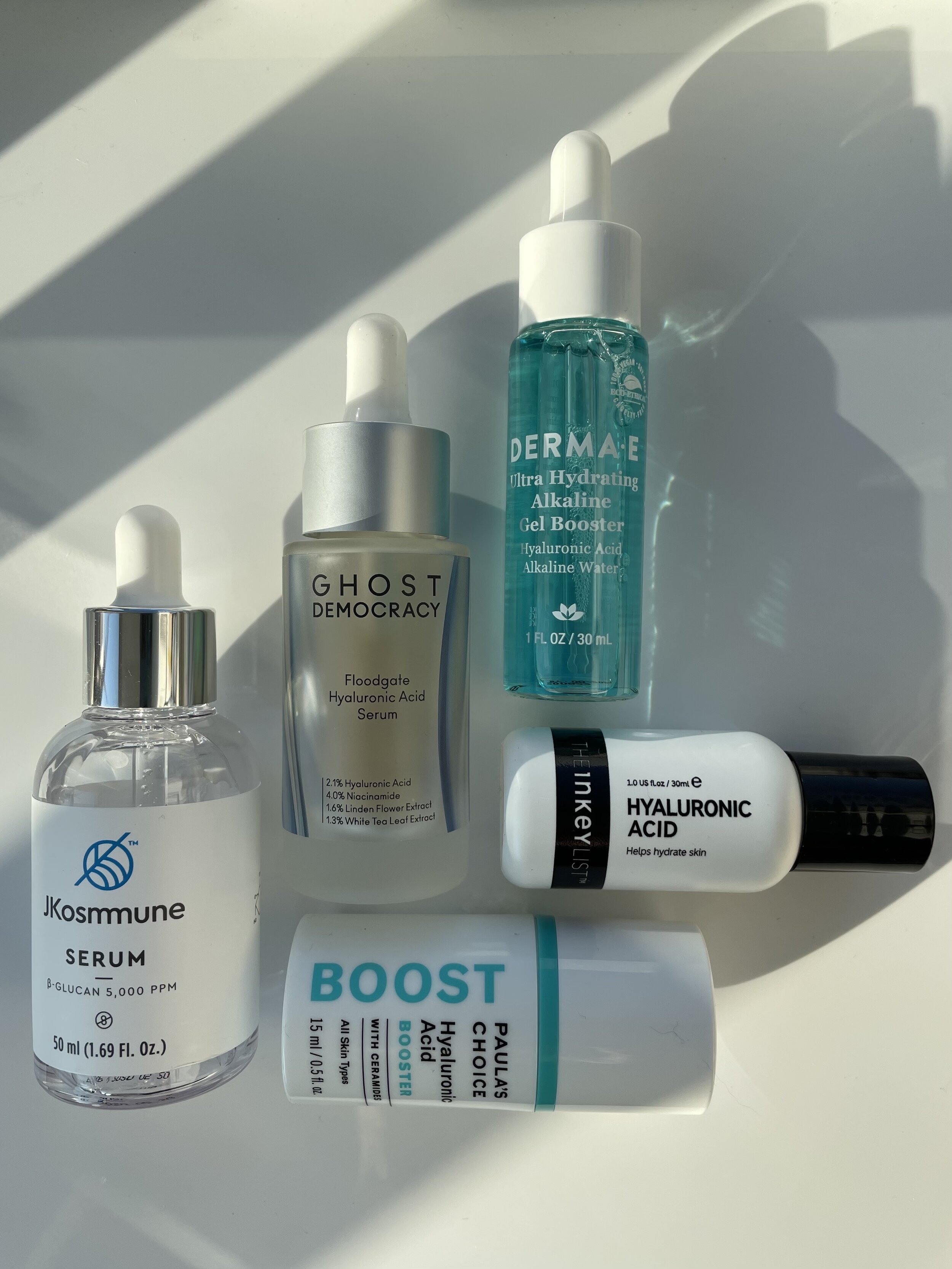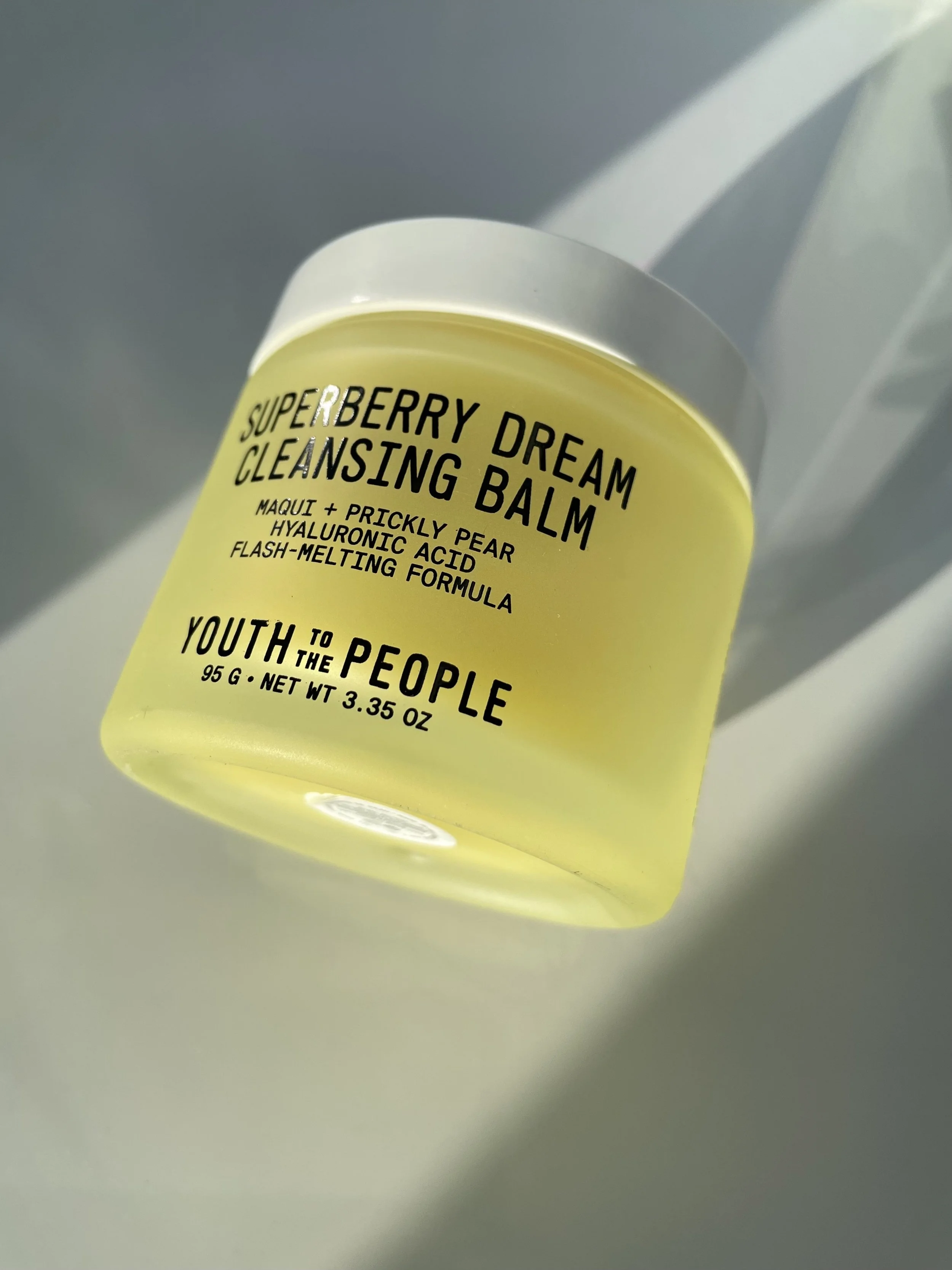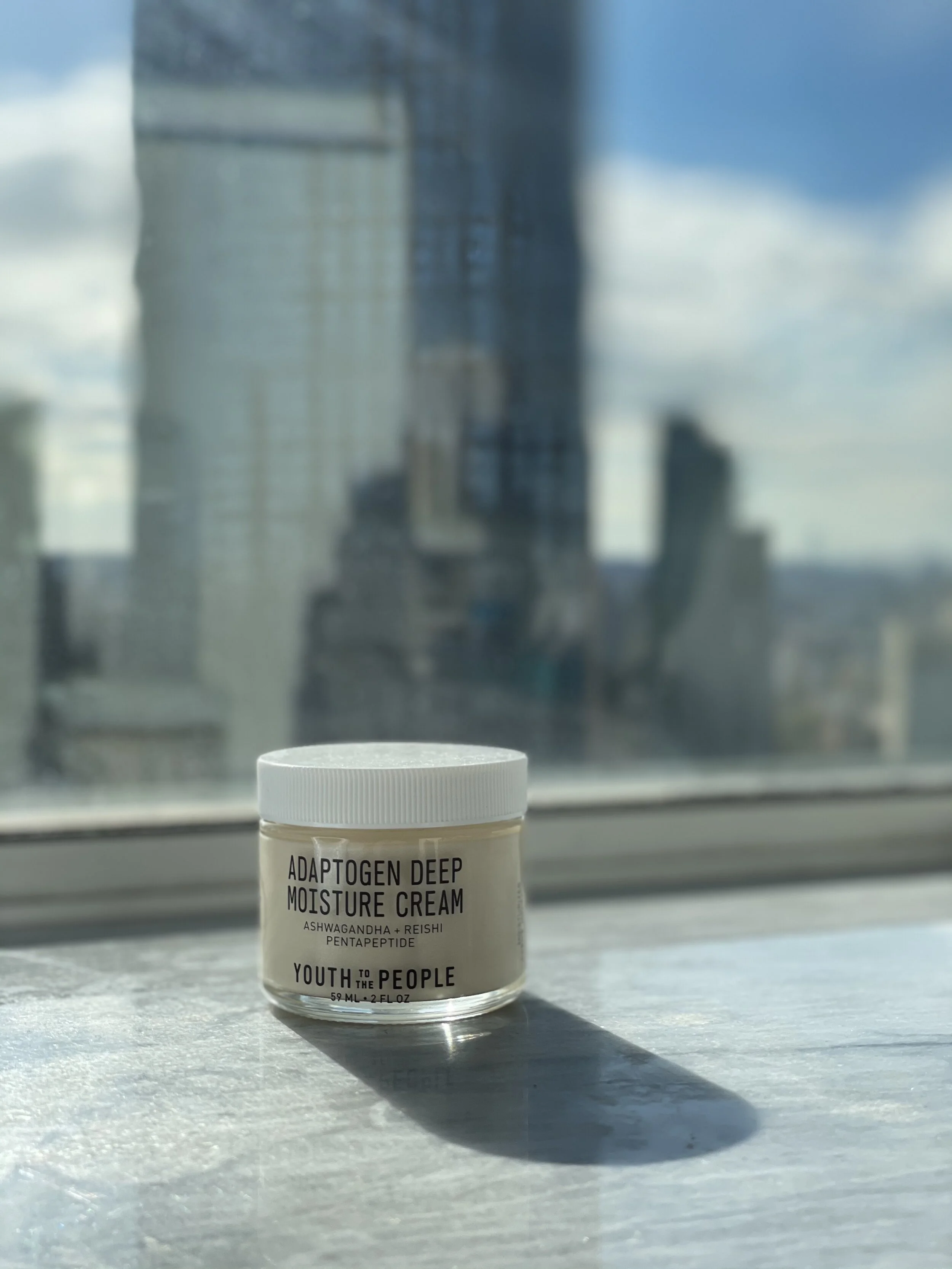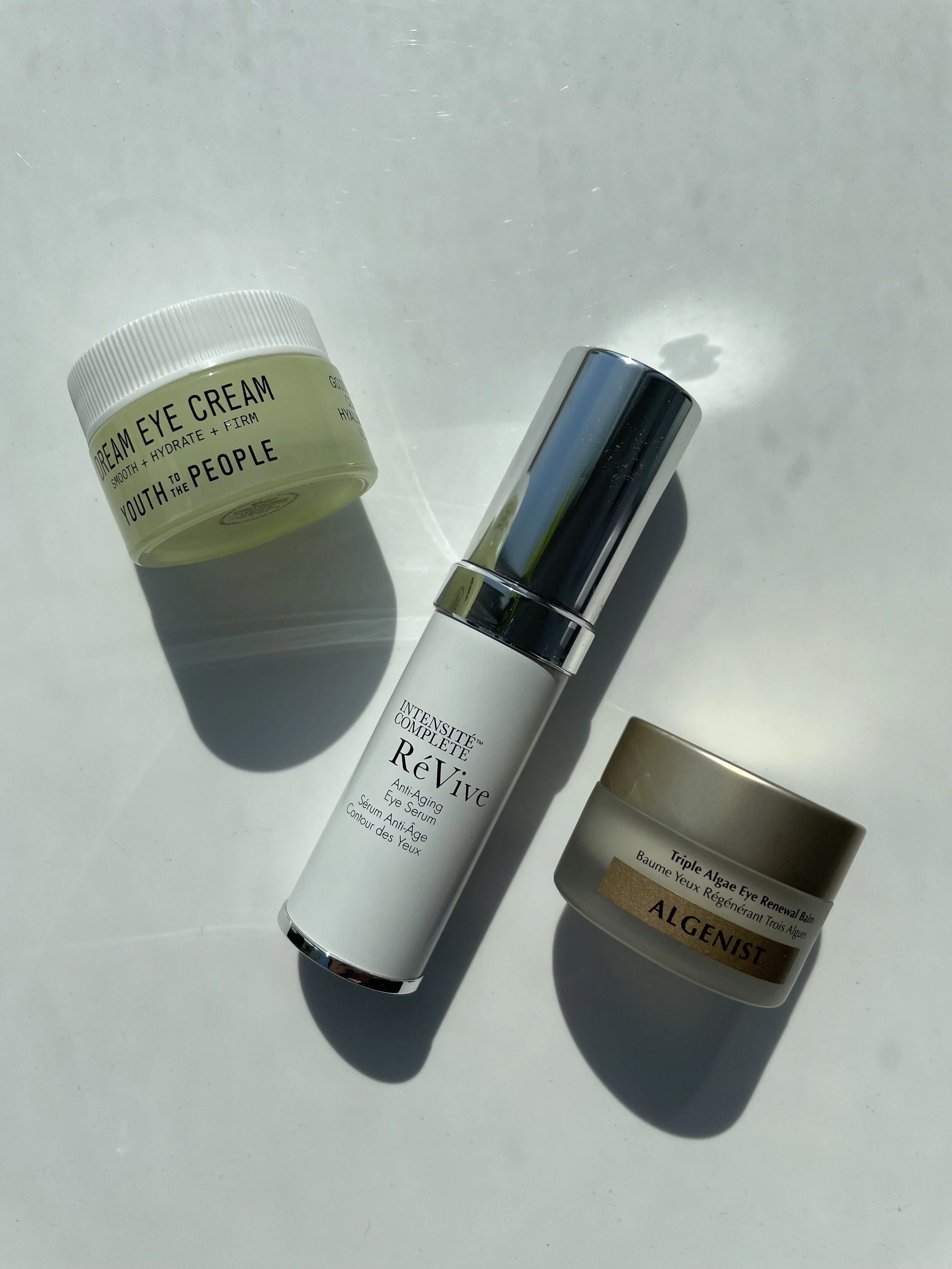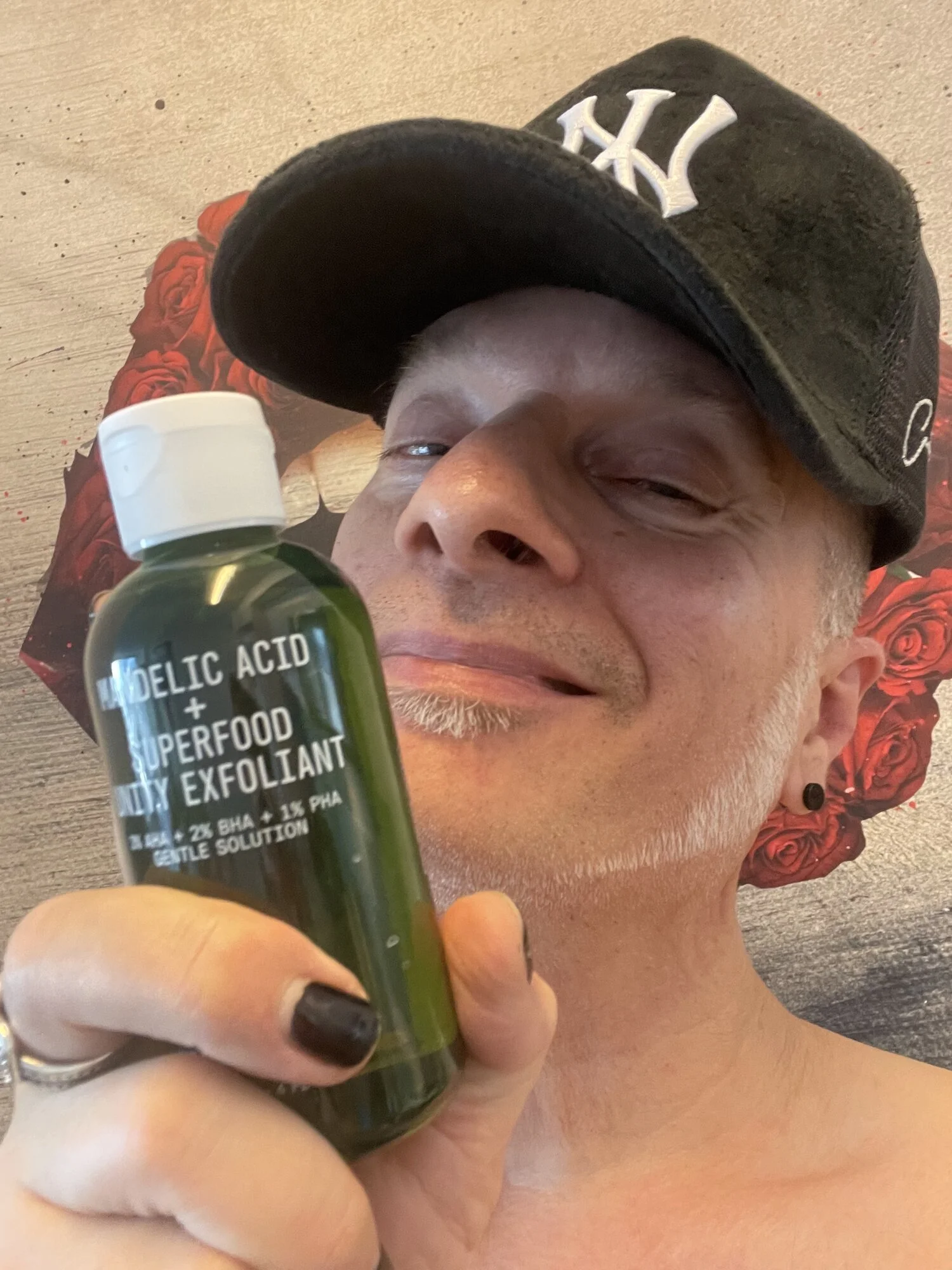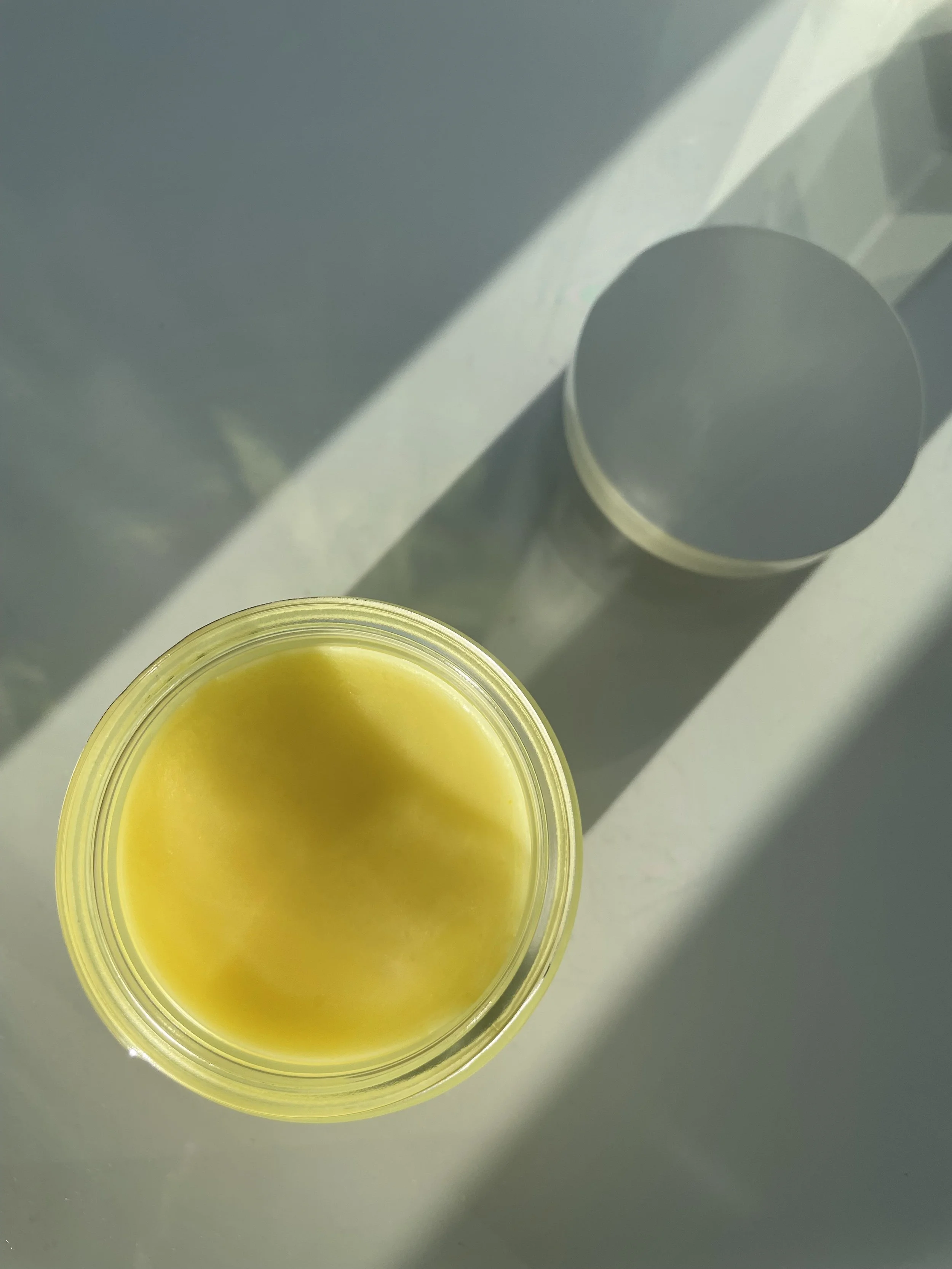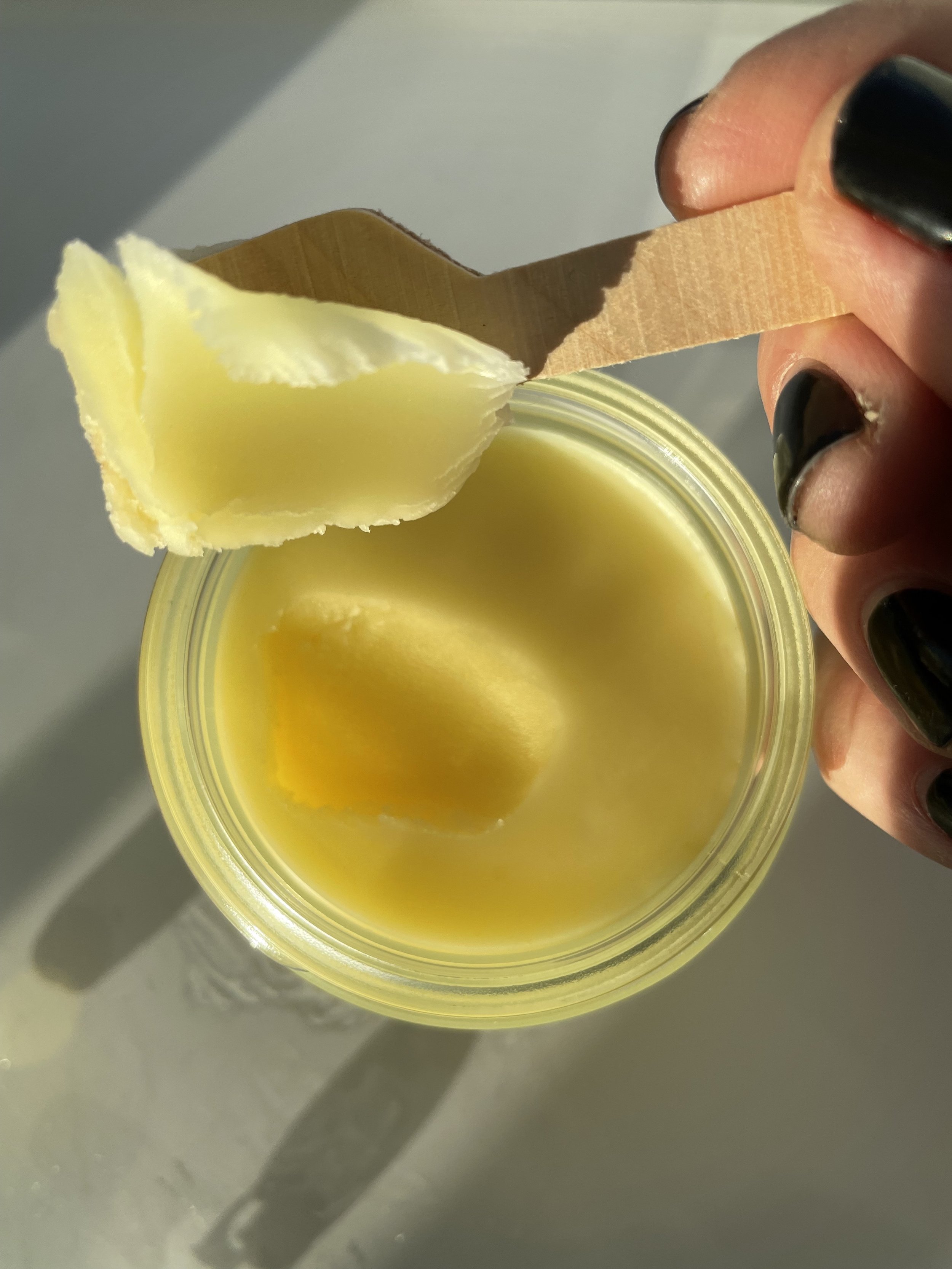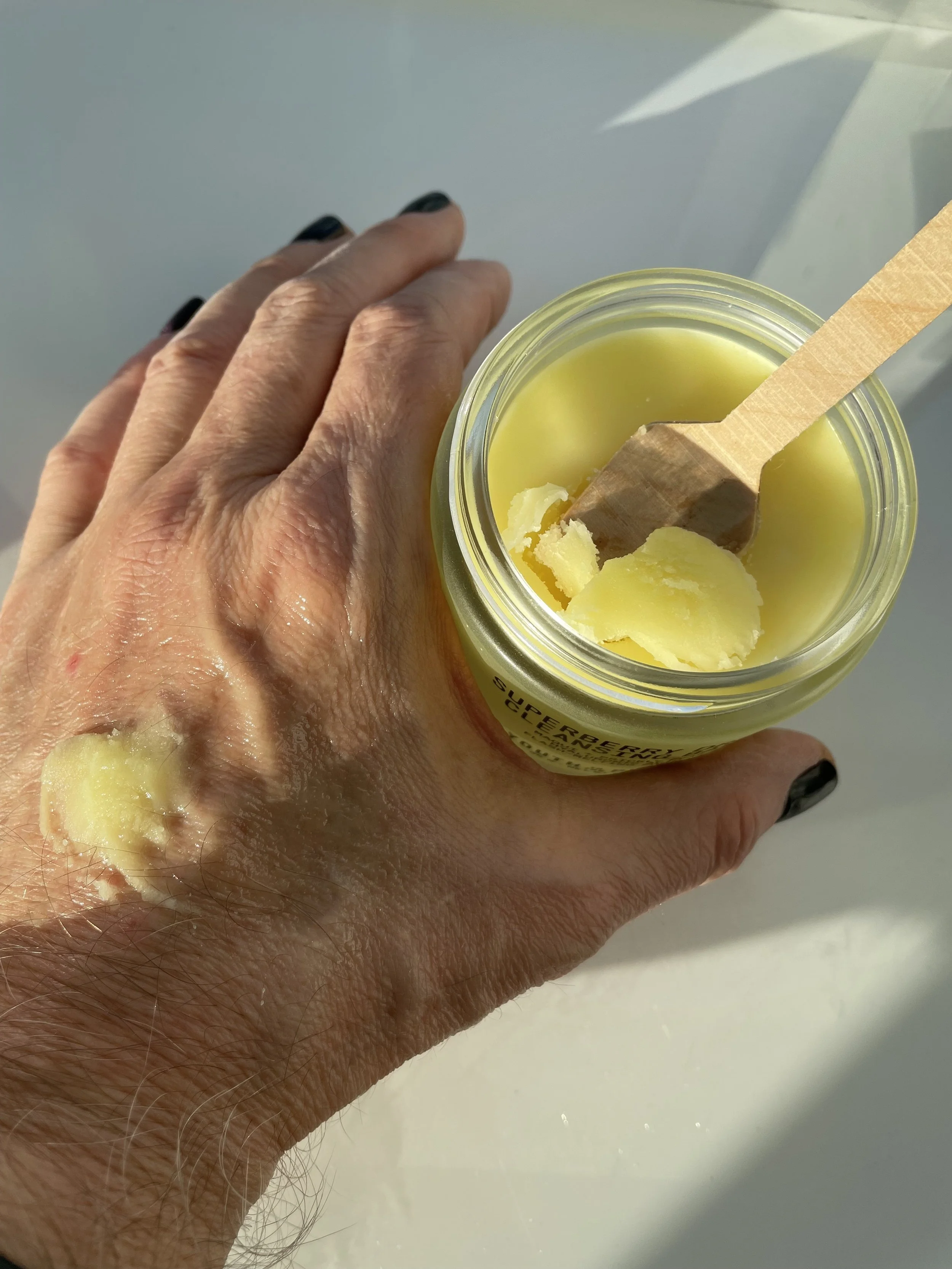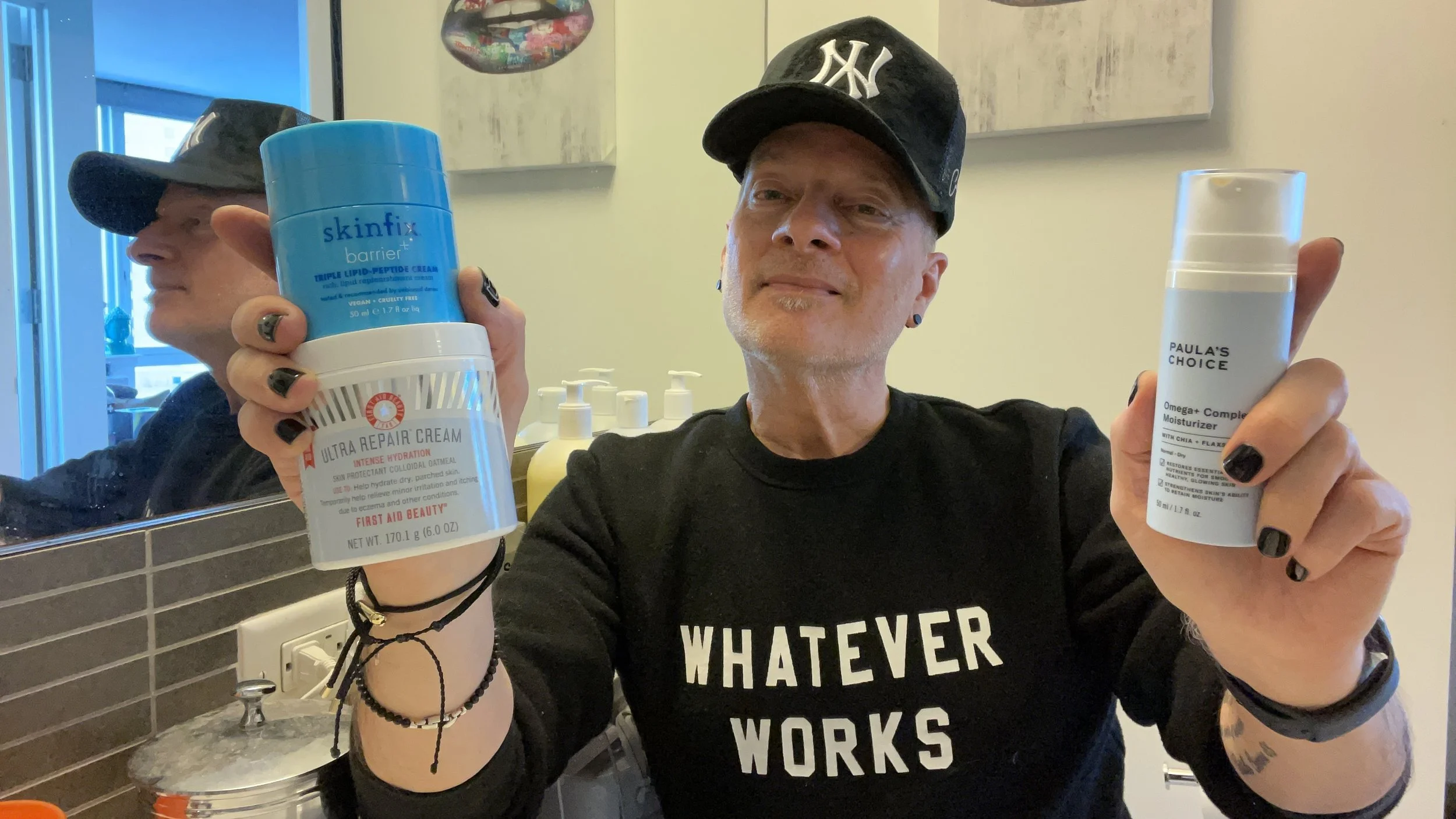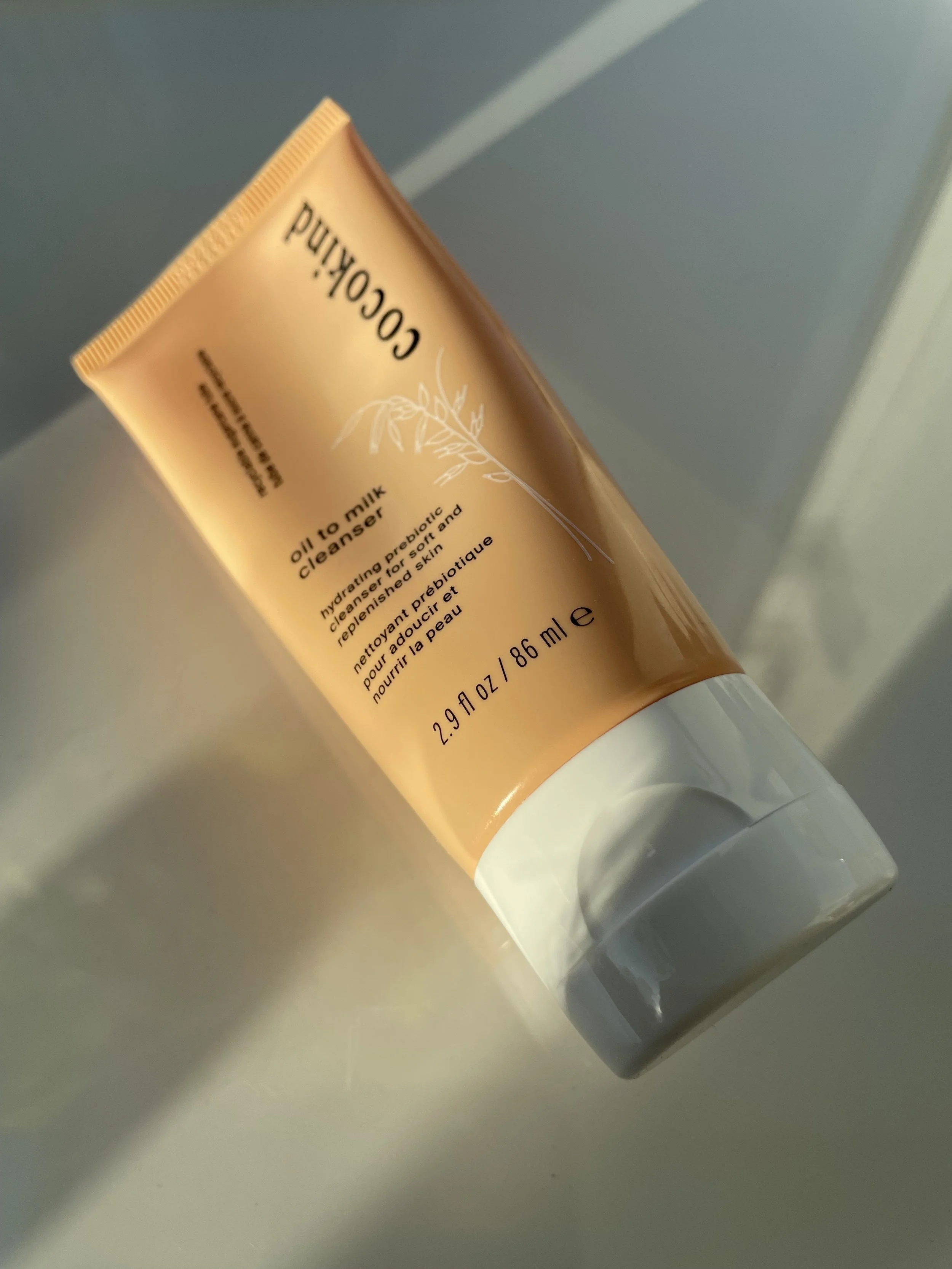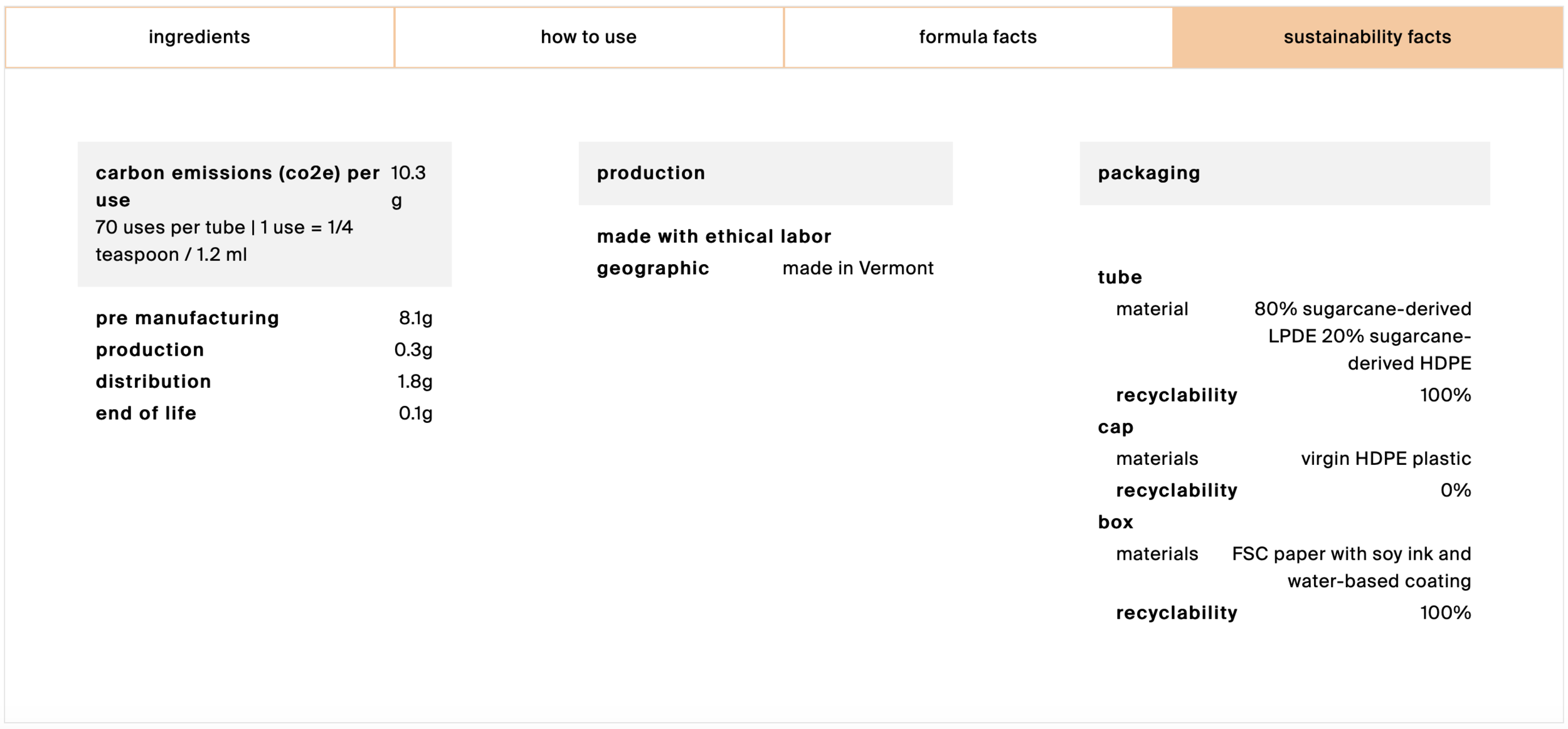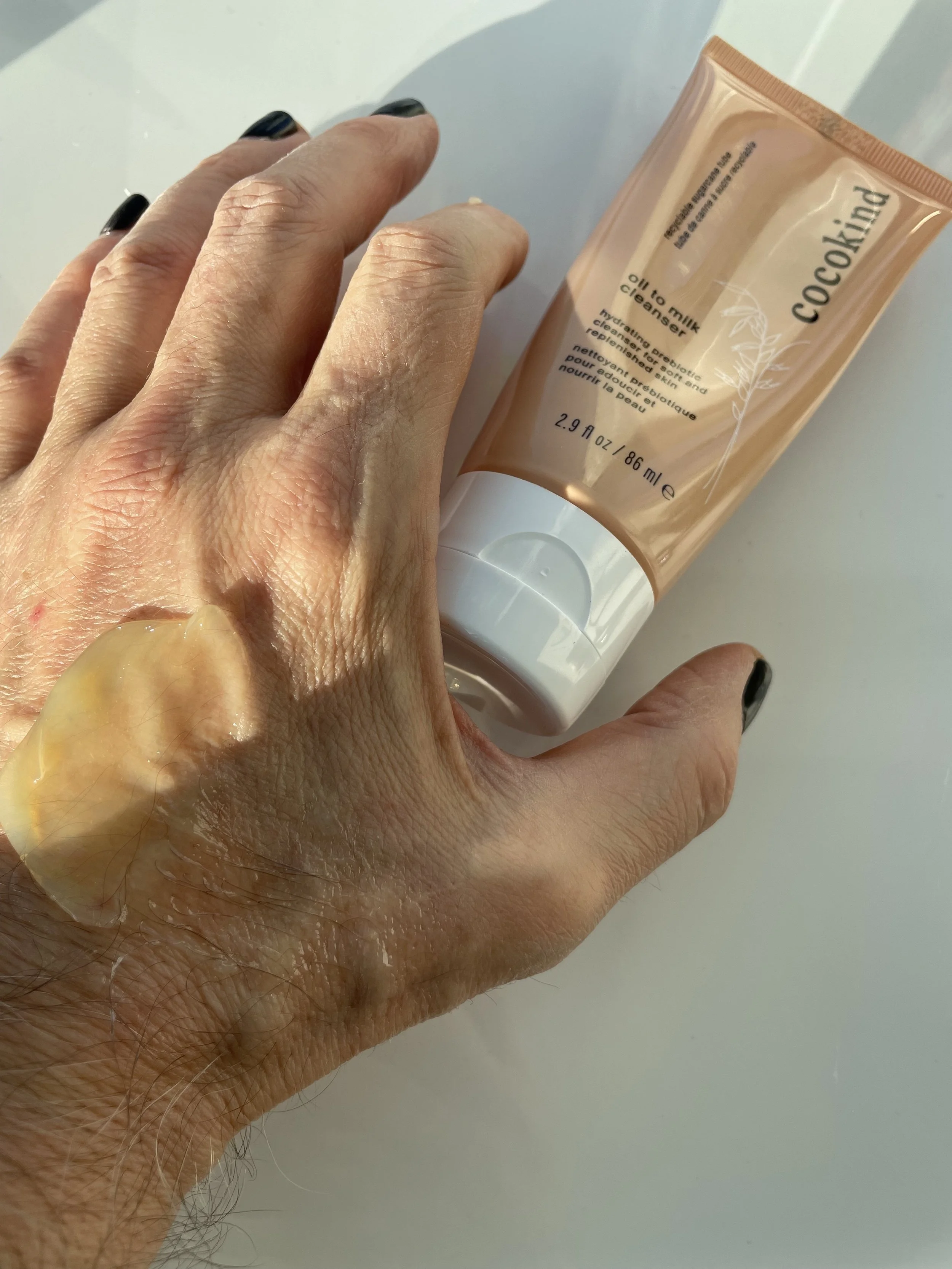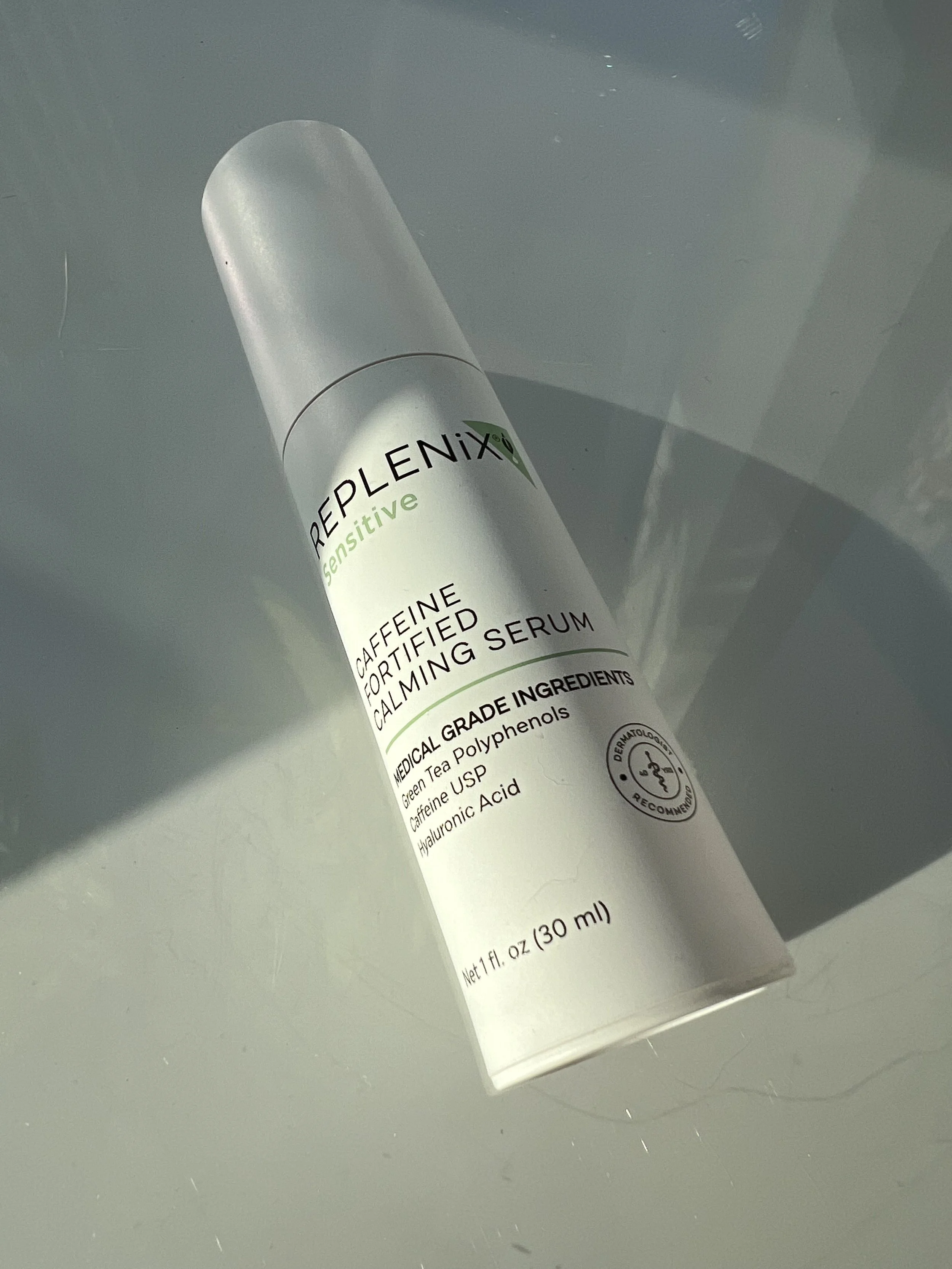SEASONAL SKINCARE TRANSITIONING: MY FAVE FW21 CLEANSING BALMS – PAULA'S CHOICE OMEGA+ COMPLEX CLEANSING BALM, YOUTH TO THE PEOPLE SUPERBERRY DREAM - BEST CLEANSERS FOR DRY SKIN
As I write this, it’s cold and rainy here in Brooklyn. And by cold, I mean at just below 40 degrees which means freezing rain that feels like hell has come.
Okay, I’m exaggerating a bit. It could certainly be worse, right? It’s just the beginning of winter, with Christmas just days away.
Of course, I made a point of getting out of here for the weekend to someplace warm and sunny. Palm Springs, California, here I come!
Then, for January, I booked flights to Cabo San Lucas, Mexico. I have never been to Cabo, despite having been to Puerto Vallarta, Cancún and Mexico City dozens of times combined. The warmth of Mexico in January is always a great idea.
I’m no fan of the cold. Orpheus isn’t a big fan of it either. In fact, when it gets really cold, the windows in the apartment are freezing to the touch. I lose track of him and eventually wonder where he is, why I haven’t seen him asleep in one of his favorite spots. That’s when I suddenly spot a big lump in the bed. To escape the cold, he burrows under the covers and stays there for hours at a time.
I don’t just hate the feeling of cold air, but how it ravages my skin. It was only in the last two or three years where I fully understood the effects dry, low humidity air has on the skin — and how to counteract that to keep my skin optimally healthy from November to March.
Over the last several weeks, I’ve been featuring my cold weather insights in a series of blog articles that I’ve themed around the concept of “seasonal skincare transitioning” — that is, switching up your skincare routine to focus on counteracting the effects of the dry, cold air.
I kicked off the season in October with my two-part series on richer face creams for cold weather in a series titled, Seasonal Skincare Transitioning: Moisturizers I Love That Make Me Excited For Cold Weather. You can catch Part One here and Part Two here.
Each article featured four of the best face creams for dry, dehydrated skin in the cold — one for each skin type: oily skin, dry skin, sensitive skin and all skin types. Just as we all need to drink enough water each day, every skin type experiences some degree of dryness and dehydration in low-humidity climates, even very oily skins.
The first in the series featured two of my favorite lipid-replenishing products for cold weather from one of my favorite clinical skincare brands, Skinfix. In my experience, the Skinfix Barrier+ Triple Lipid-Peptide Face Cream is among the best face creams for dry skin, especially in winter. And the Skinfix Barrier+ Triple Lipid-Boost 360° Eye Cream is perhaps the best eye cream for wrinkles, crow’s feet and dehydration in the eye area.
You can explore both of these fantastic winter skin saviors on the blog here.
PRODUCT REVIEW: SKINFIX BARRIER+ TRIPLE LIPID-PEPTIDE FACE CREAM AND TRIPLE LIPID-BOOST 360° EYE CREAM
I followed that pair on face cream articles with another two-part series, this time on the best facial oils for dry skin. Facial oils are wonderful in winter, with an unrivaled occlusive quality that helps skin hold onto moisture longer to slow and prevent trans-epidermal water loss, or TEWL. The articles were titled, Seasonal Skincare Transitioning: Facial Oils I Love That Make Me Excited For Cold Weather. Again, if you’re interested, Part One is here and Part Two is here.
In my latest exploration of seasonal skincare, I published a piece on lipids and the importance of lipid replenishment during fall and winter in an article titled, Seasonal Skincare Transitioning: Dry Skin? You May Be Low On Lipids! Skinfix Triple Lipid-Peptide Face Cream And Fig. 1 Beauty Ceramide Moisturizer. The piece answered the central question: What Are Skin Lipids and Are Lipids Good for Skin?
SEASONAL SKINCARE TRANSITIONING: DRY SKIN? YOU MAY BE LOW ON LIPIDS!
BEST FACE CREAMS FOR DRY SKIN
Seriously, what are lipids?
Well, they’re fat substances in the skin’s layers that are responsible for keeping the skin moisturized, maintaining skin barrier strength; and they even play a role in the skin’s reparative processes. Lipids are found in plants, animals, and human skin. Human skin lipids include substances likely familiar to you: ceramides, cholesterol and fatty acids.
Our skin’s lipid composition contains a healthy balance of each of these. In general, the skin’s lipid content includes 50% ceramides, 25% cholesterol, and between 10–20% fatty acids.
What Are Skin Lipids and Are Lipids Good for Skin?
There’s an insightful article on the Dermstore website titled, The Role of Lipids—Cholesterol, Ceramides and Fatty Acids—in the Aging Process which you can read here.
Lipids in Your Skin
In a nutshell, lipids are skin’s natural fats. They are essential components of skin and play a crucial role in maintaining the strength of the skin’s protective barrier, which holds moisture, protects the skin from damage and keeps dirt and impurities out. They also aid the skin’s natural repair process. While there are many types of lipids, these three are the most prevalent—and important—for the skin.
Cholesterol: This lipid helps accelerate the skin barrier’s recovery and improve the appearance of skin elasticity. Visible skin aging is often caused by cholesterol deficiency on the skin. It’s important to note that cholesterol on your skin is different from the cholesterol found in the blood, and having more of it on your skin won’t cause your blood pressure to spike.
Ceramides: This type of lipid is proven to increase the skin’s hydration and barrier function. Ceramide deficiency is the main cause of dry skin.
Fatty acids: Abundant in young, healthy skin, fatty acids help maintain the skin’s lipid balance.
The Role of Topical LipidsHealthy, youthful skin has an abundance of these naturally occurring lipids. As we age, lipid production declines, and this can result in rough surface texture, uncomfortable tightness, dullness and loss of facial fullness. A compromised skin barrier is also more prone to irritation and water loss. This is why it’s important to counter the effects of lipid loss with a topical treatment—but not just any topical treatment.
WATCH MY VIDEO REVIEW OF
SKINCARMA LOCK & BLOCK: THE BEST WAY TO KEEP SKIN HEALTHY & HYDRATED IN DRY, COLD AIR!
ON MY YOUTUBE CHANNEL HERE
As I alluded to, during the chilly fall and winter months, it is essential to switch up your skincare with products formulated for preventing dehydration and trans-epidermal water loss, or TEWL.
Notably, I’ve been hearing a lot about TEWL this season, more than in seasons past. And that’s a really, really good thing. It means that skincare marketers are increasingly focusing on skin health and the compromising effects that dehydration can have on the health of your skin. Dehydration and sun damage are two of the leading causes of skin aging.
I know it sounds crazy, but what is trans-epidermal water loss? Well, simply, it’s the loss of moisture through the epidermis, or skin barrier — and the leading cause of dehydration. When the air around us gets colder, it dries out. In a freak of nature that doesn’t favor humans, this low-humidity air literally draws water out of our skin to compensate and replenish itself.
What Is Trans-Epidermal Water Loss and What Causes Trans Epidermal Water Loss?
For a deeper dive (no pun intended!) into trans-epidermal water loss, or TEWL, there’s an excellent article on the health website Skin Better titled, What Is Transepidermal Water Loss and Why Is it Important? It’s available to read here.
In the piece, the author explains TEWL as follows:
“The skin is comprised of three primary layers: the epidermis, the outermost layer; the dermis or middle layer; and the hypodermis, the undermost layer. When water passes from the dermis through the epidermis and evaporates from the skin’s surface, this is known as transepidermal water loss (International Journal of Pharmaceutics).
While TEWL is a process that your skin naturally regulates, certain factors that can damage the skin’s barrier function can also affect TEWL levels. Circumstances such as injury, low-humidity weather conditions and topically applied products that dry out the skin can impact TEWL.
To achieve this, combine humectant and occlusive skincare ingredients.
Transepidermal water loss can contribute to a variety of dry skin conditions, and although it is a natural process, there are ways that you can help your skin stay moisturized and hydrated. Hydration refers to the water content of the skin, whereas moisturization is the skin’s ability to retain those water molecules. Therefore, your skin needs both elements to maintain desirable levels of TEWL.
To achieve this, combine humectant and occlusive skincare ingredients. Humectants help to draw moisture to the epidermis, either from the air if it is humid enough, or from the underlying dermis in low-humidity conditions. Because water content that is drawn from the dermis can be lost through TEWL, it’s important to combine the use of humectants with occlusives. Together, these ingredients create a reservoir of moisture in the epidermis and act as a barrier on the skin to help prevent TEWL by sealing in that moisture. The occlusive agents simultaneously keep pollutants, toxins and harmful bacteria out (Skin Therapy Letter).”
Throughout my series on seasonal skincare transitioning, I’ve talked about what I refer to as the Skincarma Lock & Block strategy. What I’m referring to are the two measures necessary for preventing trans-epidermal water loss and subsequent dehydration. They are locking water in the skin with humectants and blocking the escape of moisture through the skin barrier with occlusive products like heavier facial oils and creams.
The Skincarma “Lock and Block” Prevents Dehydration
To start, preventing dehydration in the first place requires drinking enough water. That differs for each of us based on our weight, the foods we eat, and the climate we live in. It’s even more important during colder periods.
A good rule is to drink one ounce of water each day for every pound of body weight. So, if you weigh 150 lbs., you’ll need to drink 150 ounces of water each and every day to keep your body and your skin optimally hydrated.
Then, employing skincare to treat and prevent dehydration requires what I refer to as a “lock and block” strategy.
It begins with a dedicated humectant serum applied to the skin in both your AM and PM routines that helps to lock water in. Follow with a moisturizer composed of a healthy balance of both humectants and oils to block and prevent the trans-epidermal water loss that can lead to dehydration.
SEASONAL SKINCARE TRANSITIONING: THE BEST PRODUCTS FROM THE ORDINARY AND NIOD THAT GET ME EXCITED FOR THE COLD!
With my series on cold weather face creams, facial oils and lipid replenishers, I thought it would be interesting to talk about cleansers next — and specifically, the importance of an emollient-rich, non-stripping cleanser on a dry, cold day.
What that means is a cleansing balm!
I love, love, love a soothing, pampering cleansing balm on a chilly evening. Personally, I make the transition to a cleansing balm around this time each year, when my skin can become irritated and sensitized by the dry air around me. There’s nothing worse than aggravating sensitized skin more with a stripping cleanser. And with a cleansing balm or cleansing oil, there’s no need to.
Last year around this time, I published my first piece on cleansing balms titled, The Best Cleansing Balms for Dry Skin, Oily Skin and Sensitive Skin. You can still catch the full article here. I featured three of the best cleansing balms for sensitive skin, dry skin and all skins in winter.
THE BEST CLEANSING BALMS FOR DRY SKIN, OILY SKIN AND SENSITIVE SKIN - DRUNK ELEPHANT SLAAI, BANILA CLEAN IT ZERO
Among these were the uber-popular Drunk Elephant Slaai Makeup-Melting Butter Cleanser, the best exfoliating cleansing balm and pretty much the only exfoliating cleansing balm I know of.
I also included the iconic Banila Clean It Zero Cleansing Balm — the first cleansing balm I ever tried. It’s a cool, quirky formula for sure. With its thick, waxy formula, it’s effective, but hardly the most luxurious cleansing balm.
Rounding out the collection was Ayond’s Metamorph Cleansing Balm, perhaps the most luxurious cleansing balm I’ve ever come across. The stuff is pure gold!
This year, I’m featuring three new cleansing balms — new to the market and new to me. To start is the Paula’s Choice Omega+ Complex Cleansing Balm, the latest addition to the brand’s Omega+ collection. It’s rich, but not so rich that it needs to be scooped out of a jar with a spatula. It comes in a convenient tube, similar to The Ordinary’s Squalane Cleanser — itself a cleansing balm, despite the oversimplified name.
PRODUCT REVIEW: PAULA'S CHOICE OMEGA+ EYE CREAM - BEST EYE CREAM FOR WRINKLES
Next, and also in a tube, is the Cocokind Oil to Milk Cleanser. I’ve just begun to explore skincare from the clean, California-based brand. The brand’s Revitalizing Eye Cream is superb and the Cocokind Daily SPF mineral sunscreen has been a favorite for several weeks now.
Last is Youth To The People’s super rich and super new Superberry Dream Cleansing Balm. I love Youth To The People’s clean, natural, superfood-powered skincare and knew I would love their new cleansing balm. I’m excited to share it with you!
Let’s have a look at each of my FW21 cleansing balm picks in more detail below…
Paula’s Choice | Omega+ Complex Cleansing Balm
Two years ago, I first came across the Paula’s Choice Omega+ Complex Moisturizer and immediately recognized it was one of the best face creams for dry skin and nearly all skin types in winter. The Omega+ Complex Moisturizer is a really well-formulated product that all skin types can benefit from.
Like the other products in the Paula’s Choice Omega+ collection, it’s loaded with superfood omega fatty acids, replenishing ceramides, and so many antioxidant botanicals and non-fragrant plant oils that I couldn’t count them all. My guess is there are 75-80 ingredients in all — nearly all of them with notable benefits for the skin.
The formula’s plethora of skin-strengthening omega fatty acids is found in the INCI in the form of Linseed (Flax) Seed Oil, Chia Seed Oil, and Passion Fruit Seed Oil — each rich in some variation of omega 3, 6, and 9 fatty acids.
I’ve shared about the Paula’s Choice Omega+ Complex Moisturizer on the blog several times and you can catch my review of it here.
PRODUCT REVIEW: PAULA’S CHOICE OMEGA+ COMPLEX MOISTURIZER - BEST FACE CREAM FOR DRY SKIN WITH FATTY ACIDS
The Paula’s Choice Omega+ Complex Moisturizer is the centerpiece of the brand’s Omega+ collection, which to date now comprises four products. Just last week, I included the Paula’s Choice Omega+ Complex Eye Cream on the blog.
It’s a near-perfect eye cream and is especially ideal for replenishing depleted lipids like fatty acids in the eye area. The Omega+ Complex Eye Cream has an amazing texture, too, that makes it suitable for just about everyone in cold weather.
If you’re curious about the Omega+ Complex Moisturizer, I invite you to check out my initial deep dive of the first three Omega+ products in my blog article titled, Products I Love: Paula’s Choice Omega+ Best Facial Skincare Powered by Omega Fatty Acids. You can catch the full piece here.
PRODUCTS I LOVE: PAULA’S CHOICE OMEGA+ BEST FACIAL SKINCARE POWERED BY OMEGA FATTY ACIDS
Given my exceptional experiences with the Paula’s Choice Omega+ collection, I was really excited to take the new Paula’s Choice Omega+ Complex Cleansing Balm for a test spin. Of course, it didn’t disappoint me. In fact, it’s become one of my favorite cleansers over the last several weeks.
As I said, I love cleansing balms. But when it’s later in the evening, or I’m in a hurry, it’s not an ideal situation to have to scoop product out of a jar. And it’s not entirely hygienic either. Both of my problems with a cleansing balm in a jar are similar to the issues I have with a face cream in a jar. Although, with a cleansing balm, you don’t really have to be concerned with oxidation of sensitive ingredients like antioxidants.
So, I really do appreciate the genius of the new Paula’s Choice Omega+ Complex Cleansing Balm. It’s a terrific, pro-skin health formula that gets the job done — and it’s easy to use. That’s kind of the whole package.
What’s truly special about the formula, though, is its concentration of pro-skin health, replenishing lipids in the form of omegas 3, 6 and 9 fatty acids. As I alluded to earlier, fatty acids are one of a class of essential lipids found in human skin — along with ceramides and cholesterol.
During the dry, cold months where we are exposed to low-humidity air, it is essential to replenish skin’s lipids to prevent dehydrating trans-epidermal water loss.
What Are Fatty Acids and What Are Fatty Acids in Skin Care?
There’s an insightful piece on the Paula’s Choice website titled, How Omega Fatty Acids Help Skin. In it, the experts on the Paula’s Choice Research Team explain the vital importance of fatty acids to skin health.
Omega fatty acids like those found in fish and various plant oils are well known for their remarkable nutritional benefits when consumed via food or supplements as part of a healthy diet—but you might not know about the amazing benefits they have when applied to skin.
The research about omega’s healthy fatty acids for skin is fascinating; in fact, it inspired us to formulate highly specialized products to deliver these important ingredients—and their benefits—to skin: Omega+ Complex Serum, Omega+ Complex Moisturizer, and Omega+ Complex Eye Cream. Adding one or more of these omega fatty acid-packed products to your skin care routine can supplement and enhance the results you get from your other products for visibly improved skin.
What are Omega Fatty Acids?
Omega fatty acids are valuable fats, for your diet and your skin. There are 11 omega fatty acids of which two (omega-3 and omega-6) are considered essential fatty acids because the body cannot make them on its own (meaning you must supplement them in one way or another). Among the omegas, the most vital for skin are:
Omega-3— Found in foods such as fish, flax seed (linseed), walnut, and chia oils, plus certain species of algae
Omega-6— Abundant in many plant oils, linoleic acid, and passion fruit oil
Omega-9— Plentiful in flax seed (linseed) oil and soybean, canola, peanut, and sunflower oils
Omega-3 and 6 fatty acids are not only essential to consume orally, but when applied to skin, research has shown they play a role in maintaining your skin's healthy appearance, among many other benefits.
WATCH MY VIDEO REVIEW OF
PRODUCTS I LOVE: PAULA’S CHOICE OMEGA+ BEST FACIAL SKINCARE POWERED BY OMEGA FATTY ACIDS
ON MY YOUTUBE CHANNEL HERE
The Paula’s Choice Omega+ Complex Cleansing Balm is a luxurious, replenishing face cleanser that’s literally everything in winter. In addition to its omega fatty acids, there are also several non-fragrant, replenishing plant oils, including Jojoba Seed Oil, Caprylic/Capric Triglyceride, Olive Oil and Meadowfoam Seed Oil.
Most notable among these is Meadowfoam Seed Oil at ingredient number eight in the INCI. Meadowfoam Seed Oil has tremendous benefits for the skin, including replenishing the fatty acid content in the skin barrier.
According to the experts on the Paula’s Choice Research Team, Meadowfoam Seed Oil is one of the best actives used in skincare. What makes it so exceptional exactly?
From the team:
Limnanthes alba (meadowfoam) seed oil is a non-fragrant, edible plant oil originally developed as an agricultural crop in the 1950s. It functions as an emollient and softening agent in skin care and hair care products.
This plant oil is exceedingly stable because it is primarily composed of long chain fatty acids, the type most resistant to rancidity when exposed to oxygen. Among plant oils, meadowfoam has the highest concentration (95%) of these highly stable fatty acids, making it a valuable addition to products that would otherwise be prone to spoiling quickly.
Meadowfoam seed oil can also enhance the penetration of other ingredients into soil and across animal skin; however, to date the same benefit hasn’t been shown to occur on human skin. On the upside, the long-chain fatty acids in this plant oil have chemical similarity to some of the fatty acids found in skin’s own oil, so in theory it’s certainly possible meadowfoam oil would help deliver other oil-based (lipophilic) ingredients to skin.
Just a dollop is all it takes to cleanse, soothe and replenish skin. I like massaging the balm into my skin for up to a minute, then emulsifying it with warm water. It rinses off quite easily, leaving skin feeling comfortable and soothed.
The Paula’s Choice Omega+ Complex Cleansing Balm is really an exceptional cleansing balm — and one of the best face cleansers I’ve come across this year.
PRODUCT REVIEW: PAULA'S CHOICE OMEGA+ EYE CREAM - BEST ANTI-AGING EYE CREAM
What I like about it: The Paula’s Choice Omega+ Complex Cleansing Balm is a near-perfect face cleanser that replenishes fatty acids, or lipids, in the skin. I love that it’s light enough to dispense from a tube, something I always appreciate when I’m tired and need my PM routine to be as uncomplicated as possible.
What I don’t like about it: Honestly, there’s nothing I don’t like about it. It’s really that good.
Who it’s for: All skin types in cold weather, but especially dry and sensitive skins.
SHOP THE BLOG: Purchase the Paula’s Choice Omega+ Complex Cleansing Balm for $50 here.
MY FAVORITE HUMECTANT SERUMS FROM PAULA'S CHOICE, THE INKEY LIST AND MORE - BEST HYALURONIC ACID SERUMS
Youth To The People | Superberry Dream Cleansing Balm
I. Love. Youth. To. The. People.
The brand has such a cool, laid back vibe that’s reminiscent of my days in Los Angeles. And, come to think of it, Youth To The People is from Los Angeles. I’ve reviewed many, many of the cleanly formulated brand’s products — including the Youth to the People Adaptogen Deep Moisture Cream and the Superfood Air-Whip Moisturizer with Hyaluronic Acid — one of the best face creams for oily skin.
PRODUCT REVIEW: YOUTH TO THE PEOPLE ADAPTOGEN DEEP MOISTURE CREAM – BEST FACE CREAM FOR DRY SKIN
“We believe in youth. The optimism in it and the courage to act to protect our future. We believe in being Good To The People. Our Giving arm is a foundry for people who care about people and the planet. Giving initiatives support non-profits and activists working to amplify diverse voices and increase inclusivity, build a more just world, and save the planet. Giving takes action. As the charitable arm of YTTP, Giving invests in shaping a better future for everyone.”
— Joe and Greg, co-founders
NEW EYE CREAMS I LOVE FROM YOUTH TO THE PEOPLE, ALGENIST, REVIVE AND MORE - BEST BRIGHTENING EYE CREAM
But perhaps my favorite of the brand’s products is the new treatment toner — the Youth To The People Mandelic Acid + Superfood Unity Exfoliant. In classic Youth To The People fashion, the formula is a winner in my book — and one of the most gentle exfoliating toners with AHA’s, ideal for those with sensitive skin.
The Superfood Unity Exfoliant is a powerhouse treatment toner formulated with sensitive and sensitized skin in mind. The formula blends two gentle, effective exfoliating acids, the PHA Gluconolactone and the least aggressive of the alpha hydroxy acids, Mandelic Acid. I use it liberally without ever having to worry that things can go awry, that it will irritate my skin like a harsher Glycolic Acid toner often does.
SEASONAL SKINCARE TRANSITIONING: TREATMENT TONERS I LOVE THAT MAKE ME EXCITED FOR COLD WEATHER
So I was, of course, beside myself to be among the first to try out Youth To The People’s new cleansing balm, the Superberry Dream Cleansing Balm. With its super rich, pampering texture and the drier weather here in NYC, the Superberry Dream Cleansing Balm literally came at the perfect time.
YTTP always nails it and the Superberry Dream Cleansing Balm is no exception. In fact, it’s exceptional! With nourishing Sunflower, Moringa and Jojoba Seed Oils, YTTP describes it as “a flash-melting cleansing balm that rapidly dissolves long-wear makeup, water-resistant sunscreens, and oils while hydrating skin long after rinsing.”
It’s got the richest texture of the three cleansing balms in the trio — much richer than the Cocokind Oil to Milk Cleanser and Paula’s Choice Omega+ Complex Cleansing Balm, both of which are light enough to dispense from a tube. You’d be squeezing this stuff so hard you’d probably sprain your wrist trying to get it out of a tube! It’s that thick and decadent.
So, as much as I loathe products in jars, there really is no other option here. And it’s that crazy thick, emollient texture that makes Youth To The People’s Superberry Dream Cleansing Balm so exceptional.
That “flash-melting” description is fun, but not really a differentiator. Most cleansing balms like the Superberry Dream Cleansing Balm are richly emollient and melt when warmed and massaged into the skin. And they very often quickly transform into something like a rich, soothing milk.
I’m not a big fan of the balms that don’t; the ones that require removal with a warm muslin cloth. I get the whole pampering experience of that, but unless I’m paying for someone else to do it, I’d rather it be easier to remove. Warm water should be enough.
Youth To The People’s Superberry Dream Cleansing Balm is a wonderful blend of non-fragrant plant oils: Sunflower, Moringa, and Jojoba Seed Oils — rich in nutrients and omega fatty acids that help replenish and fortify the skin barrier.
As with most, if not all, of Youth To The People’s products, the Superberry Dream Cleansing Balm formula is infused with superfoods. In this case, these come in the form of “superberries” like goji berries, maqui berries and açai berries. They’re some of the most nutritious fruits with very high antioxidant activity on the skin to prevent oxidative stress and bolster skin barrier defense against free radical damage.
What are superfoods? Well, they’re defined as “nutrient-rich food considered to be especially beneficial for health and well-being.” Broccoli sprouts, salmon, dark-green leafy vegetables and, yes, berries are all examples of superfoods.
What Are Superfoods and What Superfoods Are Good For Skin?
There’s an outstanding article on the Live Science website titled, What Are Superfoods? which you can read here. The article explores the types of nutriment-rich superfoods and their benefits for the body. An excerpt:
Superfoods are foods — mostly plant-based but also some fish and dairy — that are thought to be nutritionally dense and thus good for one's health. Blueberries, salmon, kale and acai are just a few examples of foods that have garnered the "superfood" label.
However, there are no set criteria for determining what is and what is not a superfood, according to the American Heart Association. "Superfoods don't have their own food group," said Despina Hyde, a registered dietician with the weight management program at New York University's Langone Medical Center. "As a dietician, I think 'superfood' is more of a marketing term for foods that have health benefits."
Superfoods contain a variety of nutrients, such as antioxidants, which are thought to ward off cancer. They also have healthy fats, thought to prevent heart disease; fiber, thought to prevent diabetes and digestive problems; and phytochemicals — the chemicals in plants responsible for deep colors and smells, which can have numerous health benefits. Consuming foods that are packed with nutrients (as many so-called superfoods are) is certainly a good idea, Hyde told Live Science. But the key to a healthy diet is to consume a variety of nutritious foods in the right quantities, she added.
With regards to the benefits for superfoods on our skin, I found an insightful piece on the Allure website titled, 18 Superfoods for Glowing Skin, According to Dermatologists. In essence, the author holds to the age-old adage that we are what we eat. An excerpt:
When it comes to your skin, there's one thing we know for sure: What you eat can have a direct impact on how you look. If you're not specifically chowing down on superfoods for glowing skin and instead are constantly noshing on processed foods or those high in sugar and fat and devoid of fiber, it can show up in the form of dull skin, perhaps along with other issues like acne, dryness, oiliness, or dark under-eye circles. (We've been preaching to you for years about this.)
"A diet focused on high-quality lean proteins, fiber, healthy oils, raw fruits and vegetables, and spices is best for supporting healthy skin," Paula Simpson, nutritionist and cofounder of ZSStells Allure. "These foods tend to contain high-quality amino acids—the building blocks for firm skin—plus anti-inflammatory and antioxidant-rich ingredients that promote optimal skin metabolism and defense against environmental stressors."
One of those stressors is free-radical damage, "which can weaken your skin's immunity and break down its metabolic functions," says Simpson. This causes skin to eventually become uneven, and it loses that effervescent glow we're always seeking out. "It can also trigger inflammatory reactions that destroy collagen, resulting in thin, wrinkled, and blotchy skin," she continues.
Read more about the particular superfoods that are good for your skin — and great for your complexion here.
The Youth To The People Superberry Dream Cleansing Balm also contains an intriguing humectant that I’ve never seen called out by a brand before: oil-soluble Hyaluronic Acid. The anhydrous “oleo-HA” molecule is apparently ideal for use in a water-free formula like a cleansing balm.
There are also multiple antioxidant plant extracts in the Superberry Dream Cleansing Balm formula, among them Neem Extract, Turmeric Root Extract and Prickly Pear Stem Extract. All of these add to the antioxidant properties of the balm. It’s a shame that much of that likely goes down the drain when it’s washed off.
WATCH MY VIDEO REVIEW
A LITTLE PORE MAINTENANCE ON SELFCARE SUNDAY WITH YTTP!
ON MY YOUTUBE CHANNEL HERE
What I like about it: The Youth To The People Superberry Dream Cleansing Balm is the richest, most luxurious of my three FW21 cleansing balms. In fact, it’s one of the most emollient cleansing balms I’ve ever come across. It’s simply delicious!
What I don’t like about it: I hate products in jars. But really there’s just no way that anything this rich and luxurious is going to dispense from a tube.
Who it’s for: All skin types in colder weather, especially normal, dry, sensitive and combination skins. It may even be suitable for slightly oily skin in the cold.
SHOP THE BLOG: Purchase the Youth To The People Superberry Dream Cleansing Balm for $28 here.
The Best Face Creams for Dry Skin
WATCH MY VIDEO REVIEW OF
MY FAVORITE HUMECTANT SERUMS FROM PAULA'S CHOICE, THE INKEY LIST, GHOST DEMOCRACY AND MORE
ON MY YOUTUBE CHANNEL HERE
Cocokind | Oil to Milk Cleanser
I’ve just begun exploring Cocokind and am intrigued by the clean, California-based brand. Cocokind has a firm commitment to sustainability with the most in-depth, product-specific information on a web page that I’ve seen.
In the early fall, I was super into the brand’s $19 Revitalizing Eye Cream. It’s a great formula with a dense, silky texture that makes it ideal for the seasonal drop in temperatures. It’s just thin enough to dispense from a tube. I love well-formulated eye creams that aren’t in jars! And it has one of those cooling metal applicator tips. It’s a real pleasure to use.
The Cocokind Oil to Milk Cleanser is a similarly pleasurable formula. If you’re not a fan of cleansing balms because they’re so rich and heavy on the skin, this one is super lightweight — the lightest of my three FW21 picks. And perhaps most ideal for oily skin.
I love the intriguing texture of Cocokind’s Oil to Milk Cleanser. But what intrigues me most about it is the sustainability info on the product page of cocokind.com.
The tube is 80% sugar cane-derived and 100% recyclable. The cap is made of virgin plastic (not recyclable). The box is 100% recyclable, consisting of “FSC paper with soy ink and water-based coating.”
I’ve never seen this level of transparency and detail from other skincare brands and hope they follow Cocokind’s lead. Have an look at this detail:
Cocokind’s Oil to Milk Cleanser formula is relatively simple, consisting of just 15 ingredients in all, nearly half of which are non-fragrant plant oils. These include Sunflower Seed Oil, Grape Seed Oil and Oat Kernel Oil — a golden lipid extracted from oats and considered by the experts on the Paula’s Choice Research Team to be among the best ingredients for use in skincare.
When emulsified with warm water on the skin, the Oil to Milk Cleanser does indeed transform into a lightweight milk, much lighter than most cleansing balms. That’s why I find it likely to be ideal for those with an oilier skin type.
What I like about it: The Cocokind Oil to Milk Cleanser is super lightweight and has a very light texture when emulsified with warm water, making it surprisingly easy to wash off. I also love that it comes in a tube.
What I don’t like about it: I like everything about it but really prefer a much thicker, emollient cleansing balm at this time of year.
Who it’s for: All skin types, even oily and very oily skins.
SHOP THE BLOG: Purchase the Cocokind Oil to Milk Cleanser for $18 here.
I hope this helps you to appreciate the soothing, pampering qualities of a cleansing balm — ideal for dry, harsh air in winter. A great cleansing balm almost makes me enjoy the cold.
See you next week…
💟 Carmine @skincarma
The Best Face Creams For Dry Skin
WATCH MY VIDEO REVIEW OF
MY WINTER SKIN SAVIOR: SKINFIX BARRIER+ LIPID REPLENISHING SKINCARE
ON MY YOUTUBE CHANNEL HERE
WATCH MY VIDEO REVIEW
HOW’S YOUR MICROBIOME DOING? THE BEST WAY TO CHECK YOUR MICROBIOME HEALTH…
ON MY YOUTUBE CHANNEL HERE
WATCH MY VIDEO REVIEW
A COMPLETE K-BEAUTY ROUTINE WITH THE BEST FACIAL SKINCARE FROM PURITO, COSRX, MISSHA & MORE!
ON MY YOUTUBE CHANNEL HERE
WATCH MY VIDEO REVIEW
RETINOL, RETINOIDS, RETINOIC ACID PART ONE - THE BEST RETINOL FACE CREAMS & SERUMS
ON MY YOUTUBE CHANNEL HERE
WATCH MY VIDEO REVIEW OF
MY WINTER SKIN SAVIOR: SKINFIX BARRIER+ LIPID REPLENISHING SKINCARE
ON MY YOUTUBE CHANNEL HERE
SKINCARMA X HERBAL FACE FOOD EXCLUSIVE!
FOR A LIMITED TIME, SAVE 20% OFF HERBAL FACE FOOD!
Enter code SKINCARMA20 at checkout.
WATCH MY VIDEO REVIEW
THE YEAR’S BEST VITAMIN C SERUMS WITH THE ORDINARY, CLINIQUE, BEAUTY STAT & MORE!
ON MY YOUTUBE CHANNEL HERE
WATCH MY VIDEO REVIEW
AMPERNA PROBIOTIC SKINCARE AND TWO OF THE BEST ANTI-AGING SERUMS FOR SENSITIVE SKIN
ON MY YOUTUBE CHANNEL HERE
WATCH MY VIDEO REVIEW
MY #SELFCARESUNDAY ESSENTIALS WITH SKINFIX, HERBIVORE AND SELFLESS!
ON MY YOUTUBE CHANNEL HERE
The Ingredient List of the Paula’s Choice Omega+ Complex Cleansing Balm:
 emo, Simmondsia Chinensis (Jojoba) Seed Oil
emo, Simmondsia Chinensis (Jojoba) Seed Oil  emo 0 0-2, Hydrogenated Rapeseed Oil emo|vc, Tocopheryl Acetate aox 0 0
emo 0 0-2, Hydrogenated Rapeseed Oil emo|vc, Tocopheryl Acetate aox 0 0The Ingredient List of the Cocokind Oil to Milk Cleanser:
 sii|h 0 0, Vitis Vinifera (Grape) Seed Oil
sii|h 0 0, Vitis Vinifera (Grape) Seed Oil  aox|emo, Water solv, Sucrose Laurate emo|emu|surf, Adansonia Digitata Seed Oil
aox|emo, Water solv, Sucrose Laurate emo|emu|surf, Adansonia Digitata Seed Oil  emo, Avena Sativa (Oat) Kernel Oil, Sucrose Palmitate emo|emu|surf, Sucrose Stearate emo|emu|surf 0 0, Pelargonium Graveolens Flower Oil
emo, Avena Sativa (Oat) Kernel Oil, Sucrose Palmitate emo|emu|surf, Sucrose Stearate emo|emu|surf 0 0, Pelargonium Graveolens Flower Oil  perf, Tocopherol▴
perf, Tocopherol▴  aox 0-3 0-3, Anthemis Nobilis Flower Oil
aox 0-3 0-3, Anthemis Nobilis Flower Oil  so|perf, Avena Sativa (Oat) Kernel Extract
so|perf, Avena Sativa (Oat) Kernel Extract  aox|so|emo|abrasive/scrub, Lactobacillus Ferment
aox|so|emo|abrasive/scrub, Lactobacillus Ferment  so|pres
so|presThe Ingredient List of the Youth To The People Superberry Dream Cleansing Balm:
 emo 0 0, Caprylic/Capric Triglyceride emo, Oryza Sativa (Rice) Bran Wax, Polyglyceryl-2 Sesquicaprylate emu, Polyglyceryl-6 Distearate emu, Water/Aqua/Eau solv, Polyhydroxystearic Acid emu, Moringa Oleifera (Moringa) Seed Oil
emo 0 0, Caprylic/Capric Triglyceride emo, Oryza Sativa (Rice) Bran Wax, Polyglyceryl-2 Sesquicaprylate emu, Polyglyceryl-6 Distearate emu, Water/Aqua/Eau solv, Polyhydroxystearic Acid emu, Moringa Oleifera (Moringa) Seed Oil  emo, Simmondsia Chinensis (Jojoba) Seed Oil
emo, Simmondsia Chinensis (Jojoba) Seed Oil  emo 0 0-2, Sorbitan Olivate
emo 0 0-2, Sorbitan Olivate  emu, Hydrolyzed Sodium Hyaluronate h, Sodium Hyaluronate
emu, Hydrolyzed Sodium Hyaluronate h, Sodium Hyaluronate  sii|h 0 0, Opuntia Ficus-Indica (Prickly Pear) Stem Extract*
sii|h 0 0, Opuntia Ficus-Indica (Prickly Pear) Stem Extract*  so, Aristotelia Chilensis (Maqui Berry) Fruit Extract, Euterpe Oleracea (Acai) Fruit Extract, Lycium Barbarum (Goji Berry) Fruit Extract, Moringa Oleifera (Moringa) Leaf Extract, Opuntia Tuna (Prickly Pear) Flower/Stem Extract, Melia Azadirachta Flower (Neem) Extract, Melia Azadirachta Leaf Extract, Ocimum Sanctum Leaf Extract, Curcuma Longa (Turmeric) Root Extract
so, Aristotelia Chilensis (Maqui Berry) Fruit Extract, Euterpe Oleracea (Acai) Fruit Extract, Lycium Barbarum (Goji Berry) Fruit Extract, Moringa Oleifera (Moringa) Leaf Extract, Opuntia Tuna (Prickly Pear) Flower/Stem Extract, Melia Azadirachta Flower (Neem) Extract, Melia Azadirachta Leaf Extract, Ocimum Sanctum Leaf Extract, Curcuma Longa (Turmeric) Root Extract  aox|so|sb|perf, Ocimum Basilicum (Holy Basil) Flower/Leaf Extract, Corallina Officinalis (Red Algae) Extract, Ricinus Communis (Castor) Seed Oil emo|perf 0 0-1, Hydrogenated Castor Oil emo|vc|emu|surf 0 1, Tocopherol
aox|so|sb|perf, Ocimum Basilicum (Holy Basil) Flower/Leaf Extract, Corallina Officinalis (Red Algae) Extract, Ricinus Communis (Castor) Seed Oil emo|perf 0 0-1, Hydrogenated Castor Oil emo|vc|emu|surf 0 1, Tocopherol  aox 0-3 0-3, Sodium Laurylglucosides Hydroxypropylsulfonate surf|emu, Caprylyl Glycol h|emo, Sodium Chloride vc, Ethylhexylglycerin pres, Phenoxyethanol pres, Hexylene Glycol solv|emu|perf|surf 0-1 0-2, Fragrance/Parfum
aox 0-3 0-3, Sodium Laurylglucosides Hydroxypropylsulfonate surf|emu, Caprylyl Glycol h|emo, Sodium Chloride vc, Ethylhexylglycerin pres, Phenoxyethanol pres, Hexylene Glycol solv|emu|perf|surf 0-1 0-2, Fragrance/Parfum  perf
perf

